

MAY 2022
MAY 2022 £3.99 readersdigest.co.uk HEALTH • MONEY • TRAVEL • RECIPES • FASHION • TECHNOLOGY
Hugh Dancy On Making A “Proper Costume Drama”
Downton Abbey’s Saving The Sound Of The Stradivarius STRINGS HISTORY The Of 4 Stories Of Retirement Reinvention


Contents
Features
16 IT’S A MANN’S WORLD
Olly Mann tries a mysterious spice and discovers a whole new world of flavour
ENTERTAINMENT
20 INTERVIEW:
HUGH DANCY
The British actor on Downton Abbey, family, and what he misses about the UK
28 “I REMEMBER”: LEO SAYER
The Seventies’ icon opens up about five decades in the industry, and why England feels like “unfinished business”
HEALTH
36 PHANTOM PAIN
It’s the loudest physical sensation we can feel—so why is so little known about pain?
INSPIRE
54 COMMUNITY POWER
Meet the people who went out of their way to protect their beloved local landmarks

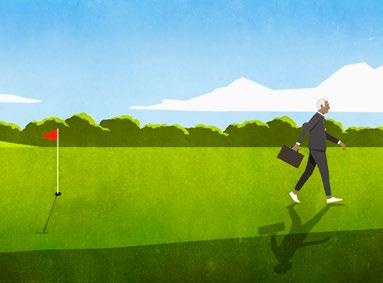
72 RETIREMENT? NO, THANKS
Why seniors who head back to work are happier and healthier
80 THE STRADIVARIUS SOUND
How the sound of the legendary violin is being preserved for posterity
TRAVEL
88 THE LAST FRONTIER
Exploring one of America’s wildest national parks, Big Bend
MAY 2022 MAY 2022 • 1
p72 p20 cover illustration by
Daniel Mitchell






























































Please debit my card for this delivery. Name on card:
All orders are subject to availability and acceptance. Please allow up to 28 days for delivery. All items are sent under Windsor Mint’s 60-day NO OBLIGATION GUARANTEE. If you do not return any item(s) within 60 days you agree to pay the invoiced price. By placing an order you are confirming you are 18 years or older. All prices include VAT at the current rate. A credit check may be carried out. You may stop collecting at any time by simply notifying us. In order to send you information and special offers from us and selected other companies, we work with your data on the basis of the GDPR, Art 6 (1f), also with the help of trusted suppliers. You can find further information in our privacy statement, which you can see at any time on www.windsormint.co.uk or request in print from our customer service. You can cancel the use of your details for marketing purposes at any time by sending a simple message to Windsor Mint, 11 Lowesmoor Wharf, Worcester, WR1 2RS.












Card
My
WINDSOR MINT by HMK ®
want to order the strictly limited 'British Banknotes' complete set of six golden bars (Item-No. 903-831-2) – please choose: ❑ I would like to pay in 5 monthly interest-free instalments of £19.95 each. ❑ I would like to pay the full amount of £99.75 (instead of £359). There will be no further shipments and no further obligations. Please ensure you tick above if you prefer to pay in 5 instalments, otherwise we will debit the full amount. Your set will be sent POSTAGE FREE and with a guaranteed 60 days right of return. Give us a call and receive an additional gift! 01905 886220 All orders are subject to our Terms & Conditions, available on request or at www.windsormint.co.uk Your trade partner: HMK V AG, Leubernstrasse 6, CH-8280 Kreuzlingen Today's Date Signature First Name Surname Address City Postcode • Strictly limited to only 9,999 sets worldwide • Highest minting quality 'PROOF' • Available exclusively from WINDSOR MINT® £19.95 for just 5 instalments of or the full amount of £99.75 (instead of £359) ORDER NOW AND SAVE £259.25 636A-02 ★ commitment,Noongoing nofurthershipments! MINT Customer Service Offi ce: Windsor Mint, 11 Lowesmoor Wharf, Worcester, WR1 2RS Dedicated Order Line: 01905 886220 Mon-Fri 8am - 9pm, Weekends 8am - 8pm. Email: service-uk@windsormint.co.uk WINDSOR MINT® is a brand name of HMK V AG. Responsible in terms of GDPR and Trade Partner: HMK V AG, Leubernstrasse 6, CH-8280 Kreuzlingen • A useful book safe • Elegant wooden display case Exclusive 'British Banknotes' complete set of six golden bars Commemorating Britain's most significant banknote characters Your FREE gifts: common reverse Format: 70 mm x 30 mm Fully layered with 24-carat gold
Number: Expiry Date:
payment of £ is made by: Mastercard Visa Cheque/postal order made payable to Windsor Mint
YES! I
of
The Duke
Wellington
Florence Nightingale
Charles Dickens
Sir Winston Churchill William Shakespeare
Sir John Houblon


MAY 2022 • 3 9 Over to You 12 See the World Differently HEALTH 44 Advice: Susannah Hickling 48 Column: Dr Max Pemberton INSPIRE 70 If I Ruled the World: Grace Dent TRAVEL & ADVENTURE 96 My Great Escape 98 Hidden Gems: Rio de Janeiro MONEY 100 Column: Andy Webb DIY 104 Column: Mike Aspinall FASHION & BEAUTY 106 Column: Bec Oakes’ Fashion Tips 108 Beauty FOOD & DRINK 110 A Taste of Home 112 World Kitchen: Crete ENTERTAINMENT 114 May’s Cultural Highlights BOOKS 120 May Fiction: James Walton’s Recommended Reads 125 Books That Changed My Life: Liz Pichon TECHNOLOGY 126 Column: James O’Malley FUN & GAMES 128 You Couldn’t Make It Up 133 Word Power 136 Brain Teasers 140 Laugh! 143 Beat the Cartoonist 144 A Century of Change
p110 Contents MAY 2022
In every issue
p70
WHAT COULD YOU ACHIEVE WITH SOME EXTRA CASH?

Everybody has different financial priorities, but we can all agree that additional funds would go a long way towards achieving our goals.
Perhaps you’d like extra cash to help loved ones onto the property ladder, clear your existing mortgage and enjoy your retirement free of required repayments, or have more to spend on the things that really matter.
If you are a homeowner aged 55 or over, consider how the value held in your home could help. The most popular equity release product called a Lifetime Mortgage has become increasingly flexible and could be the perfect way to tick off your wish list.
HOW DOES A LIFETIME MORTGAGE WORK?
A Lifetime Mortgage allows you to borrow a tax-free cash lump sum from the value of your property, while retaining full homeownership and without any required repayments. Instead, interest rolls up and this, plus the initial loan, is usually paid back when the last homeowner has passed away or moved into long-term care and the property is sold.
HOW WILL READER’S DIGEST EQUITY RELEASE HELP?
There is a lot to consider when making any decision that involves your home, and with so many Lifetime Mortgage features available, it is important to get advice if you are considering equity release to achieve your goals.
PARTNERSHIP PROMOTION
Reader’s Digest Equity Release can ensure that you have all the facts from somebody you trust. Our nationwide team of advisers are ready to understand your individual needs and recommend plans to suit you. They can also help you understand that releasing equity will reduce the value of your estate and could affect your entitlement to meanstested benefits.
If you release equity with our help, you’ll benefit from interest rates fixedfor-life and a guaranteed extra review of your application from a second qualified expert.
YOUR EQUITY RELEASE JOURNEY
Call the friendly Information Team at Reader’s Digest Equity Release today on 0800 029 1233 to kickstart the process of receiving the right advice and support, every step of the way.
The UK-based team will send you a copy of the Reader’s Digest Complete Guide to Equity Release to help you find out more about how a Lifetime Mortgage works. Plus, if you’re ready, they can book you in for an appointment with one of their fully qualified advisers so that you can understand the options available to you before proceeding. n

Reader’s Digest Equity Release is a trading style of Responsible Life Limited. Only if your case completes will Responsible Life Limited charge an advice fee, currently not exceeding £1,690.
www.readersdigest.co.uk/er2 Or call 0800 029 1233 For more information visit:
SENIOR EDITORS Anna Walker, Eva Mackevic
EDITORIAL ASSISTANT Marco Marcelline
ART DIRECTOR Richard Cooke
ADVERTISING Jigs Pankhania
HEAD OF FINANCE Santwana Singh
FINANCE MANAGER
Irving Efren
MANAGING DIRECTOR Julie Leach CHAIRMAN Steve Wilkie
TRUSTED MEDIA BRANDS INC (USA)
President and Chief Executive Officer
Bonnie Kintzer
Editor-in-Chief, International Magazines
Bonnie Munday
WE PAY...
£50 for the star letter and £30 for regular letters.
Email readersletters@readers digest.co.uk or go to readers digest.co.uk/contact-us
WE ALSO PAY...
£30 for the true stories, anecdotes, jokes in Laugh! and You Couldn’t Make It Up…, and contributions to end-ofarticle fillers and My Great Escape
Email excerpts@readersdigest.co.uk or go to readersdigest.co.uk/contact-us
SORRY!
We cannot acknowledge or return unpublished items or unsolicited article-length manuscripts. Do not send SAEs. Article-length stories, poetry and cartoons are not requested.

CUSTOMER SERVICES
Contact Customer Services for renewals, gifts, address changes, payments, account information and all other enquiries. Call 0330 333 2220* or email customer_service@readersdigest.co.uk
TALKING MAGAZINES
Reader’s Digest is also available in audio and accessible etext editions from RNIB Newsagent, for blind and partially sighted readers. Call the RNIB Helpline on 0303 123 9999 or visit rnib.org.uk/newsagent
SUBSCRIPTIONS
Annual subscriptions are available to be delivered monthly direct to your door. For our latest offers please visit readersdigest.co.uk/subscribe Or telephone us today on 01778 392461.
Gift subscriptions also available.
UK rates may vary. Overseas rates: Republic of Ireland £45, Europe £50 and Rest of the World £60 for 12 month subscription.
*Calls to 03 numbers cost no more than a national rate call to an 01 or 02 number and will be free if you have inclusive minutes from any type of line including mobile, BT or other fixed line PAPER FROM SUSTAINABLE FORESTS. PLEASE RECYCLE © 2017 Vivat Direct Ltd (t/a Reader’s Digest). British Reader’s Digest is published by Vivat Direct Ltd. All rights reserved throughout the world. Reproduction in any manner, in whole or part, in English or other languages, is prohibited. Reader’s Digest is a trademark owned and under license from Trusted Media Brands, Inc, and is registered with the United States Patent and Trademark Office. All rights reserved. Printed by Warners Midlands PLC. Newstrade distribution by Seymour Distribution Limited. SMALL PRINT: Ensure submissions are not previously published. Include your name, email, address and daytime phone number with all correspondence. We may edit letters and use them in all print and electronic media. Contributions used become world copyright of Vivat Direct Ltd (t/a Reader’s Digest). Reader’s Digest is a member of the Independent Press Standards Organisation (which regulates the UK’s magazine and newspaper industry). We abide by the Editors’ Code of Practice and are committed to upholding the highest standards of journalism. If you think that we have not met those standards, please contact 0203 795 8886. If we are unable to resolve your complaint, or if you would like more information about IPSO or the Editors’ Code, contact IPSO on 0300 123 2220 or visit ipso.co.uk For all subscriber
please use
TO US! SEND US YOUR STORIES, JOKES AND LETTERS OR VISIT OUR WEBSITE
enquiries,
the customer services number below WRITE
In This Issue…

Tourists from across the world flock to the UK each year for a glimpse at traditional British life—cosy pubs lit by warm log fires, quaint corner shops stocking delicious local produce and the smile of the village greengrocer, surrounded by glossy fruit and veg. But the swift tide of modernity is threatening many of the hallmarks of our traditional villages with extinction.
On p72, we meet the communities taking matters into their own hands. From the Trawden Forest Community Pub Group, who clubbed together to save their local watering hole, to the baker who has turned abandoned telephone boxes into pop-up cake shops, their stories are inspiring, and sure to give you a dose of good old fashioned community spirit.


Grace Dent might be best known for her restaurant criticism, but looking at her agenda for the world on p72, you have to agree: she’d make a great world leader too. From national “stay at home with your pet” days to Michelin-starred meal vouchers, life would be a much brighter, more colourful affair under her reign.
One of her more serious concerns, though, is dementia awareness. Calling it a “thing so terrifying that people just blank it out” she worries that thousands of families in the UK who are dealing with it are overlooked. We need to raise awareness in every way possible, which also includes art. On p118, we review Gaspar Noé’s latest film, Vortex—an unflinching look at the condition, which thoughtfully fulfills what Grace is calling for—talking about the unspeakable.
Anna Eva
FOLLOW US

MAY 2022 • 7
EDITORS’ LETTERS
can also sign up to our newsletter at readersdigest.co.uk Reader’sDigestis published in 23 editions in 10 languages facebook.com/readersdigestuk twitter.com/readersdigestuk @readersdigest_uk
You

‘She was just metres from the rocks. A surfer in difficulty in the worst conditions I’ve ever experienced. It was a heavy, breaking sea, and almost the entire bay a seething mass of foam and spray. The rescue helicopter hadn’t arrived yet, so we were her only hope.
‘I don’t like to think what could have happened to her – or us – if anything had gone wrong.
‘With only seconds to spare, we pulled her into the lifeboat. Thanks to people like you, our equipment, kit and training kept us safe that day. Our lifeboat withstood the horrendous conditions. Our kit kept us warm and dry. And the helm’s skilful boat-handling brought us all safely home.’
6 in 10 lifeboat launches are only possible thanks to gifts in Wills, and volunteers like Daf rely on people like you to keep them safe. When you leave a gift, your name will be added to the side of a lifeboat, so you’ll be by their side on every launch.
Request your free Gifts in Wills guide:
Return the form below
Call 0300 300 0062 or Search 'RNLI Legacies' or scan the QR code

Your support saves lives, and we look forward to keeping in touch with you by post and phone, sharing our news, activities and appeals.
Would you like to receive our emails and text messages too?
Yes, I’m happy to hear from you by email
Yes, I’m happy to hear from you by text
Even if you have received our communications in the past, we’ll make sure we honour the preferences you express here.
If you would rather not hear from us, or would like to change how we contact you, please get in touch. Just visit RNLI.org/preferences or call 0300 300 9918 Title: Full Name: Address: Post code: Phone: Email: To receive a free no obligation ‘Gifts in Wills Guide’, fill
to:
Scan me
in the form below and send
‘Freepost RNLI WILLS’ (no stamp or other address details required) Privacy Notice: We will always store your personal details securely, and they will only be used by the RNLI, RNLI Shop and RNLI College. Your data may also be used for analysis purposes, to help us provide the best service possible. We will only allow your information to be used by suppliers working on our behalf and we’ll only share it if required to do so by law. For full details see our Privacy Policy at RNLI.org/PrivacyPolicy or contact our Supporter Experience Team on 0300 300 9918.
Photos: RNLI/Anna Burn
The Royal National Lifeboat Institution (RNLI), a charity registered in England and Wales (209603), Scotland (SC037736), the Republic of Ireland (CHY 2678 and 20003326), the Bailiwick of Jersey (14), the Isle of Man (1308 and 006329F), the Bailiwick of Guernsey and Alderney, of West Quay Road, Poole, Dorset, BH15 1HZ LM-A22037 JN21356502 Registered with the Fundraising Regulator
Daf Griffiths, Volunteer
Crew
Member,
Trearddur Bay
Lifeboat
Station
‘WILL YOU BE MY PROTECTION AT SEA, WITH A GIFT IN YOUR WILL?’
Over To You
LETTERS ON THE March ISSUE
We pay £50 for Letter of the Month and £30 for all others
LETTER OF THE MONTH
Jordan Stephens is talking sense when he says that if he ruled the world, he’d destroy phones. They are isolating, squirrel us down rabbit holes, and never follow through on their promise to make us feel better. We use them to fill the holes in our lives and the spaces in our days. Like shields to block out the real world, to keep real people, places and conversations at bay because a carefully edited version of reality is infinitely more appealing. It’s exhausting and we are exhausted, constantly “on” waiting for the next nudge from our devices and giving all our power away.

JUST FOR (RIZZLE) KICKS
So, how about next time you’re stood at the bus stop, queuing at the supermarket, or waiting for a friend in a cafe, you use the time instead to take a breather, check in with yourself, see how you’re really feeling and ask yourself what you really want. Or, spark some joy and reach out to someone else in your vicinity, perhaps exchange a few words and facilitate a real connection. Make a rule that your phone is only for use in emergencies and embark on the real-life adventure of actually living.
JENNIE GARDENER, Bath
What a wacky, wonderful world we would inhabit if Jordan Stephens was the ruler. His ideas on technology, economics, botany and architecture may be off the wall but make perfect sense the more they’re considered. Jordan’s spirituality shines through and he makes us aware we should all be more connected to nature and the world around us. I particularly agree with his comments on fair competition. How wonderful it would be if international disputes could be settled by a duel rather than war. It might make leaders hesitate if they were in the firing line. Like his music, Jordan Stephens is infectious, inventive and innovative. If there were a vacancy for world leader he’d get my vote.
FRANKIE COATES, Tyne & Wear
MAY 2022 • 9
AN MOT OF TLC
I was most interested in the article “A Well-Oiled Machine”. I was a 57 year old thinking I would feel forever young. That was my opinion up until the first lockdown in March 2020. Restrictions on our lives brought my active social and fitness regime to a halt and I found myself facing new health issues, triggered by lack of self-care and exercise. I lost my mental sharpness, muscle tone and developed creaky bones and aching joints. The mental loss particularly scared me as my mother had just been diagnosed with dementia. I slept poorly due to worry about not seeing family and I lost my confidence.
MUSICAL MEMORIES
I really enjoyed your piece on Tori Amos. My wife and I saw her at the Royal Albert Hall ten years ago and her musicality was obvious. I didn’t know she’d been playing the piano since she was two and I loved her description that playing was like, “breathing” as it’s reminiscent of my late grandad. He was a mechanic, a big man,

My poor state of health shocked me and I vowed to improve it, lockdown or not! Slowly I have regained my fitness and good mental health but I will never again let myself slide into such apathy that had started to age me prematurely.
Our physical and mental health is our most important asset and I fully intend to look after mine.
SUSAN LEWIS, Knaresborough

with huge hands covered in 50 years of ingrained oil and paint. At the same time, he was an amazing pianist with no training, and dancing hands that banged out glorious boogie woogie on the piano in his basement. As a child, I was accustomed to this spectacle, but as an adult I reflect in jealous wonder.
LISA BEST, Crewe
Send letters to readersletters@readersdigest.co.uk Include your full name, address, email and daytime phone number. We may edit letters and use them in all print and electronic media WE WANT TO HEAR FROM YOU!
head to toe and inside out, here’s how to age well By Lisa Fitterman Research shows our brains can be highly resourceful There are signs you should look for on your skin You can maintain strong bones in suprisingly easy ways There's a promising new treatment for heart disease Victor Wong HEALTH 36 37 10 • MAY 2022
A Well-Oiled Machine From
SAVE 10% ON YOUR FIRST ORDER
Visit fourfive.com and use code READERS at checkout to redeem.
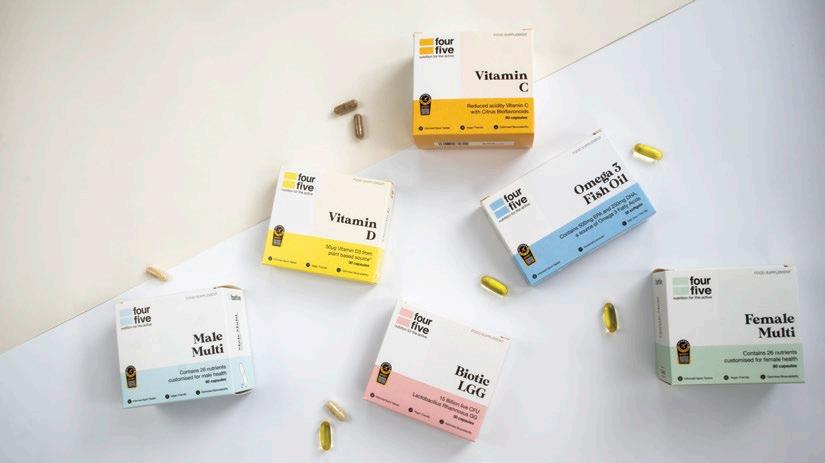
Founded by professional rugby players George Kruis and Dom Day back in 2019, fourfive was created to bring premium wellness products to anybody looking to stay healthy, happy and active.
Throughout their professional rugby careers George and Dom had become no strangers to long term injury. Whilst both recovering from yet other surgery in 2018, they reflected on the impact this could have on their long term health and fitness.
They had both witnessed other players struggling in the years post retirement and after many years in a contact sport they knew that rugby was ageing their bodies at an accelerated rate but were determined to remain active long after their sports careers ended.
They began to look more closely at the relationship between wellness, nutrition and long term health and realised they had underestimated the value of quality supplements on their ability to stay active for longer.
Fourfive launched in 2019 and have continued to go from strength to strength, with their Informed Sport tested nutrition range launching in 2020.
Their selection of core nutrients created with industry leading specifications, began to attract

the attention of high performing sports teams. In 2021, fourfive announced Official Wellness Partnerships with Premiership Rugby Team Leicester Tigers and all three elite Saracens teams at the StoneX Stadium which includes the Men’s and Women’s Rugby and the Mavericks Netball teams. In addition to this, fourfive’s star studded list of fans includes International Rugby Player Jack Nowell, Head of Yoga at Virgin Active Charlotte Holmes, TV presenter Angela Scanlon and actress Suranne Jones.
Staying active as we age is important to all of us and fourfive are proud to provide a premium range of quality, trusted wellness products that easily fit into your day to day routine. So whether it’s rugby, golf, gardening or yoga we have something to keep you performing at your best for longer.

12

WORLD... turn the page
SEE THE
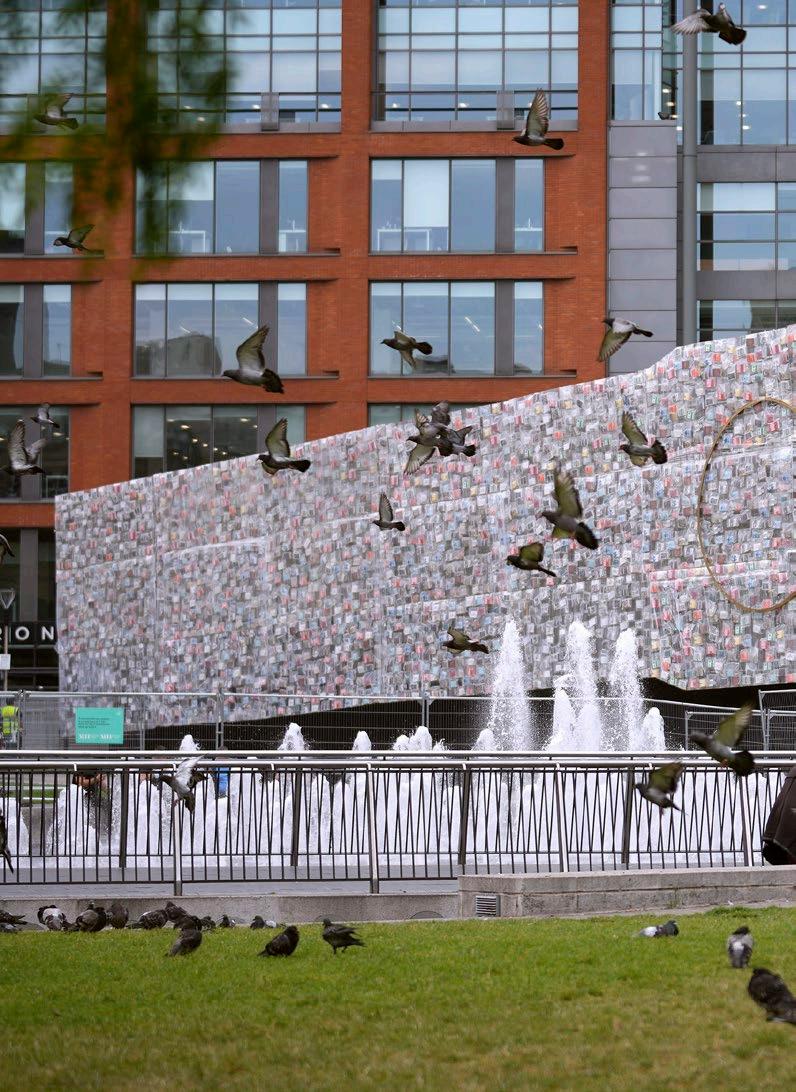
…DIFFERENTLY
It looks as if Big Ben has laid down to enjoy a good paperback. For her installation at the Manchester International Festival 2021, Argentine artist Marta Minujín had a 42-metre-long replica of the famous London clock tower covered with books: 20,000 copies of 160 titles that deal with or have shaped British politics. After the festival, visitors were allowed to take books home.

15
photos: © Christopher Furlong/ g etty i mages
Get The MSG?
This month Olly Mann gets spicy with a surprising discovery and a flavour revelation
The white powder arrived in a brown paper bag. I ripped it open to reveal the plastic packaging within, temptingly labelled "PURITY GREATER THAN 99 PER CENT". Endorphins triggered, I eagerly licked my finger, dipped it in, and applied a small quantity direct to my tongue, just to get a hit. I felt the impact immediately. It tasted like Chinese takeaway.
Such was my first experience mailordering MSG. It won’t be my last.
Monosodium glutamate, the umami seasoning frequently added to Chinese cuisine, is something I’d always been led to believe was harmful to your health. Growing

Olly Mann presents Four Thought for BBC Radio 4, and the podcasts The Modern Mann, The Week Unwrapped and The Retrospectors
up in the 1980s, I heard my parents discuss it in the same disdainful tone as carcinogenic sweeteners and tooth-rotting sugar, and can recall restaurants displaying "NO MSG" signs in their windows.
As an adult, I’d not actively avoided it, but had certainly never considered buying some. Until recently, had a pollster stopped me in the street and asked me if I agreed with the statement that MSG was harmful, I think I would have concurred—if only on the basis that any chemical concoction is surely an unnecessary accompaniment to fresh meat and veg.
But then I investigated the roots of anti-MSG rhetoric for an episode of my podcast The Retrospectors, in which we pore over the events of a particular day in history. The day in question was April 4, 1968— when Dr Robert Ho Man Kwok, a research scientist in Washington,
illustration by
Eliot Wyatt
16 • MAY 2022 IT’S A MANN’S WORLD
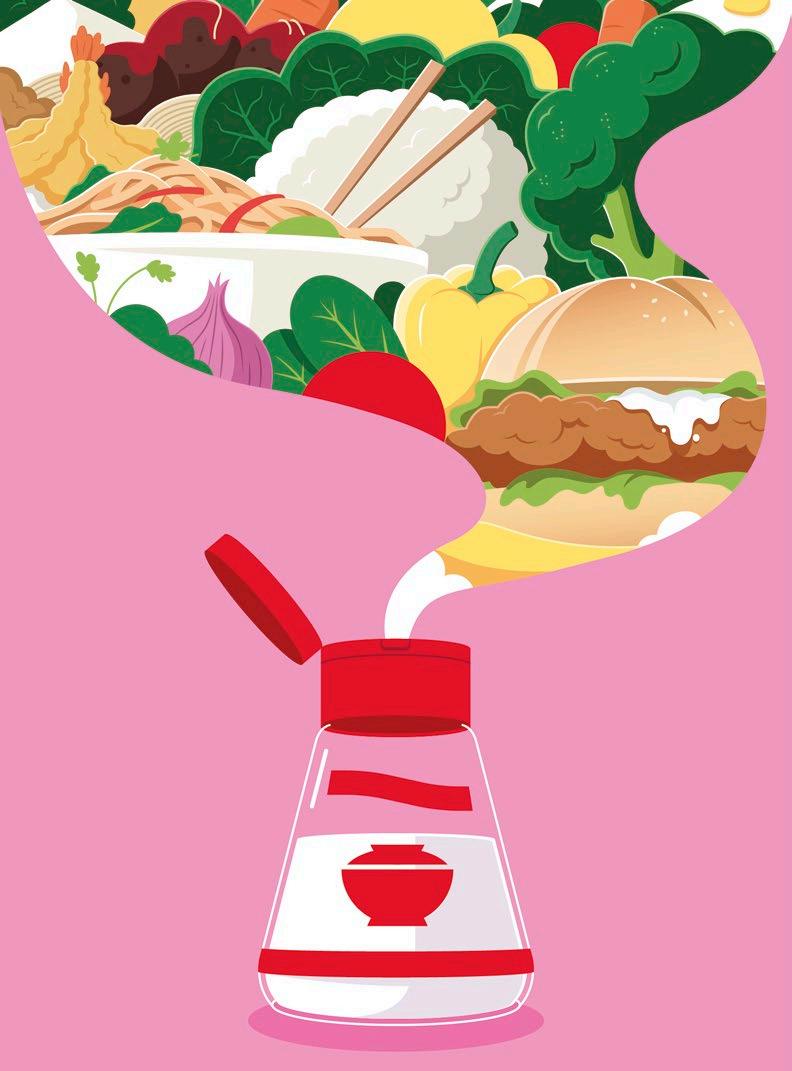
17
DC, wrote to the New England Journal of Medicine to query the possible causes of a "syndrome" that he experienced when he ate at Chinese restaurants, and posited a theory.

“The most prominent symptoms are numbness at the back of the neck, gradually radiating to both arms in the back, general weakness and palpitation”, he wrote. He elaborated that he had not experienced such sensations when cooking with soy sauce at home, and speculated that—perhaps—the widespread use of MSG across American Chinese restaurants might be to blame.
His letter prompted many of his fellow illustrious subscribers to follow-up with their own experiences, which were published in the next issue. Tales of postnoodle headaches and nausea abounded. This amiable to-and-fro was then picked up by the national press—who mostly neglected to emphasise that the correspondence was all anecdotal, not editorial; and was in the letters pages. An impression was created that some sort of scientific consensus was forming around MSG being actively harmful.
The rather racist concept of "Chinese Restaurant Syndrome" then spread across America; even as MSG
continued to be added to ample non-Chinese products and fast food, and was identified as naturally occurring within ingredients including tomatoes, Parmesan cheese, yeast extract spread—and even, believe it or not, human breast milk.
Ever since, multiple investigations have attempted to determine if there is anything especially damaging about sometimes sprinkling MSG on your cooking, as Westerners do with salt and pepper. Overwhelming evidence has subsequently answered that, in moderation, and allowing for the fact that some people have an adverse reaction, as they might with any additive (the Chinese chef, Ken Hom, for example, has been allergic to synthetic MSG since childhood), it is safe to use—not to mention tasty.
When I discovered this, I tried to buy some: I’ve always enjoyed the sweet-and-sour tang of my local takeaway, and if this was truly the magic ingredient, then I needed some in my life (like almost everyone I know, I’m also trying to cut down on my meat consumption, so the idea of making vegetables taste more like animals sounded dreamy).
First, I headed to Ocado and searched for "MSG". The query returned precisely one product— "NO MSG" instant noodle soup. Hmm (by comparison, a search for
18 • MAY 2022 IT’S A MANN’S WORLD
"kimchi" produced nine different items, and "Chinese Spice" brought up ten).
Is it illegal? I then wondered. Nope: I quickly located it on the Food Standards Agency’s page of “approved additives and E numbers”.
So, what gives? Well, in essence, there are rules regulating exactly how much MSG manufacturers can add to their products. So, mainstream British retailers don’t sell it direct to consumers, for fear people will pour half a packet, rather than a pinch, into their wonton soups. But it is available from wholesalers and specialist Asian retailers (London’s famous Japan Centre food hall, for instance).
Confident in my own ability to divvy out the packet with teaspoons rather than shovels, I located a
third-party seller on Amazon (who’d had more than 500 ecstatic reviews— clearly, I wasn’t alone in looking to diversify my spice cupboard…) and ordered a bag of Aji-No-Moto, the original Japanese brand.
I’ve since used it a couple of times per week, and can confirm that it adds zing and amplifies flavour. Delicately sprinkled onto oven-baked salmon with ginger and spring onion, the fish emerges with a delightful, deep orange sheen. Added lightly to scrambled egg, the results are, I dunno, eggier? And my egg fried rice now has that smooth consistency I had previously only tasted from Chinese restaurants.
But, of course, my experiences are only anecdotal. Please don’t write in! n
Whale-y Good Trivia
Blue whales emit sounds that other whales can hear up to 1,000 miles away.
Scientists can't agree on the lifespan of the bowhead whale. Most die between 60 and 90 but in 2007 a dead bowhead was found with a weapon fragment dating back to 1879 embedded within it, suggesting it had survived a whaling attack some 100 years earlier.
Researchers have found that female humpback whales have best friends they reunite with each year to float together, eat together and enjoy each other's company.
Sperm whales sleep with their bodies completely vertical to the surface of the water.
In 2011 sperm whales adopted a deformed dolphin who'd been rejected by their pod.
Source: listverse.com/2014/01/09/10-more-ridiculously-weird-facts-about-whales
READER’S DIGEST
MAY 2022 • 19
Hugh Dancy
“I’ve Been Able To Have My Cake And Eat It”
By Vicki Power
The British actor on living in New York, wife Claire Danes and the nostalgia of playing a quintessential Englishman in the new Downton Abbey film
In a career spanning two decades, Hugh Dancy, 46, has largely flown under the radar, carving out a solid career as a versatile actor who chooses weighty roles. After catching our eye as Daniel Deronda (2002) and the arm-candy of goofy heroines in movies like Ella Enchanted (2004), Dancy moved toward meatier roles like that of FBI profiler Will Graham in the cult psychological thriller Hannibal (2013-15) opposite Mads Mikkelsen, and of a charismatic spiritual leader in The Path (2016-18) with Breaking Bad’s Aaron Paul.
Half of a reluctant showbiz couple—Dancy’s wife is Homeland powerhouse Claire Danes—Dancy will have to start getting used to the
spotlight. He’s just joined two of the world’s biggest franchises, landing a role in the second Downton Abbey movie, A New Era, and in the revival of the US warhorse TV drama Law & Order. Being stopped for selfies on the school run in Manhattan’s West Village will soon become a daily event.
As Dancy explains his approach to accepting roles, it sounds rather unconventional. “What I tend to do is look for reasons not to do something,” muses the actor, 46.
“Not in an ego kind of way, but, What is it about this that I should recognise is going to make it a bad experience? And if those things fall away, then even if I don’t quite have a handle on something, I think, OK, I should do that thing.”
20 • MAY 2022
ENTERTAINMENT
ZUMA PRESS, INC. / ALAMY STOCK PHOTO

21
Starring opposite Mads Mikkelsen in Hannibal.
Opposite, with wife Claire Danes

And I think that means you go down interesting paths, and it sometimes involves maybe not taking yourself too seriously. Then just show up and do the work and see what comes with it.”
We’re meeting over Zoom, where Dancy, well-spoken, Oxfordeducated and raised in the Potteries, is sitting in his bright New York lounge with bookshelves lining the walls. His answers are well thought out, but he’s amusingly selfdeprecating and talks eloquently about the surprise of finding himself in two such high-profile dramas.
“I don’t know how I ended up doing Downton Abbey, which just
popped out of the blue, like a blast from the past—a glorious and beautiful one. And then Law and Order, which couldn’t be more quintessentially New York. My feeling there was a pretty common feeling among actors, but amplified, which was: I think you’ve got the wrong person.”
In Downton Dancy plays Jack Barber, an English director who takes over the Granthams’ estate to make a movie called The Gambler; above stairs, it’s considered a scandalous event that causes much clutching of pearls, while below there’s much excitement. It’s also suggested that Barber might be a love interest for Lady Mary (Michelle Dockery) in the
22 • MAY 2022
LANDMARK MEDIA / ALAMY STOCK PHOTO

“IT WAS VERY NOSTALGIC TO BE BACK IN ENGLAND PLAYING THE ENGLISHMAN”
absence of her husband, Henry Talbot (Matthew Goode, whom it appears is not returning for the movie). Dancy is sworn to secrecy on specific plot points but does lob us a crumb. “What I’m probably going to say is that her husband is still away,” says Dancy. “He is off doing something. And she does become involved in the movie, and we become partners in that respect. I mean, yes, please continue to speculate.”
He jokes that when the role was offered, his agent rang him with a level of urgency that was almost
frightening. “I got a message from my agent who, I understood subsequently, felt that this was good and exciting news,” explains Dancy with a laugh. “But from his voice message, I thought something terrible had happened!
It was wonderful to get the role on many levels, not least because there’s a lot of nostalgia around the project. It trades in nostalgia to a certain degree, but there was a kind of personal level of nostalgia for me as well, to come back to England to make a proper costume drama.”
MAY 2022 • 23
READER’S DIGEST
ABACA PRESS / ALAMY STOCK PHOTO
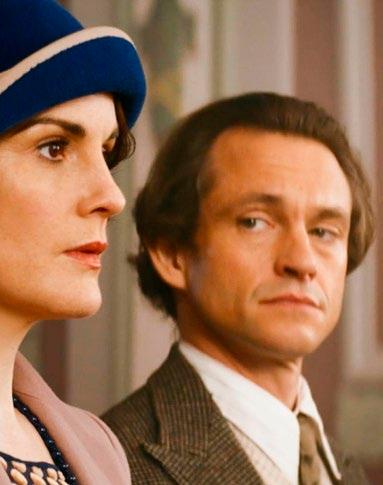
It turns out that Dancy’s job on Downton dovetailed nicely with Danes’ work. The couple were in the UK with their young sons, Cyrus, nine, and Rowan, three, while Danes filmed The Essex Serpent opposite Tom Hiddleston, due for release in May on Apple TV+. “We were in Essex and then Suffolk, and when I was filming, we were in London,” says Dancy. “So I was hopping in the car and tootling down to Highclere every once in a while.”
While back in the UK he realised the thing he’d missed most, along with pubs, was public footpaths. “The first thing I did once we were out of quarantine was download the
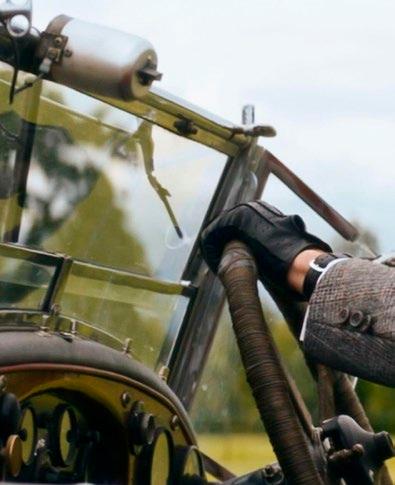
Ordnance Survey map and I took my kids out against their protests, dragging them through field, like the quintessential boring dad, going: ‘You don’t know how lucky you are to have this right! If you did this in America, you’d be shot!’ It’s an incredible thing.”
Back to Downton chat. Dancy reveals turning up for filming “was like joining that well-established moving train, jumping on and hoping that you’ll get a good handhold and that you’ll be helped aboard,” he explains, stretching the metaphor. “I found that it was very easy. Everyone was very welcoming, and it was lovely to see a group
24 • MAY 2022
INTERVIEW: HUGH DANCY
LANDMARK MEDIA / ALAMY STOCK PHOTO
Michelle Dockery and Hugh Dancy

of people who hadn’t seen each other—or anybody—for 18 months. They’re all thrilled to be back together. But they were also maybe just happy to have some fresh meat. The challenge of the job is to just try and fit into the tone of the piece,” continues Dancy.
“I spent a lot of time sitting around in very stiff clothing, surrounded by Gainsborough paintings, drinking tea, and exchanging small talk with recognisable British actors. I’ve missed that. I’m not going to say it was freeing, but it was very nostalgic to be back in England playing the Englishman in about as English or British a scenario as you can get.”
Dancy’s other big break came last autumn when he was cast as Senior Assistant District Attorney Nolan Price in Law & Order, a rebooted version of the cops-and-lawyers drama series that ran from 1990-2010 and gave rise to numerous spin-offs. Its reboot is a primetime event on NBC and a vehicle likely to propel Dancy to household name status.
He admits he was nervous joining the franchise. “You don’t want to be the person that comes along and finally gives it the kiss of death,” he laughs. “It’s like, We’ve resuscitated it! It’s back! Oh, no, it’s dead. I will do my best not to feel personally responsible for it, whatever happens.”
MAY 2022 • 25 READER’S DIGEST
Scene from Downton Abbey
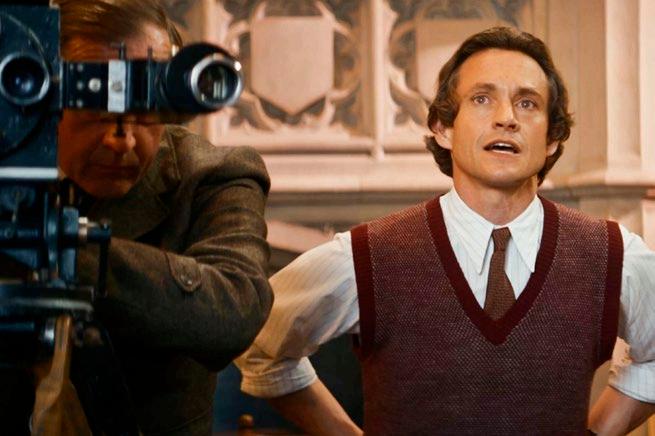
When his debut episode aired in February, it was a family affair—he and Danes watched it together. “The tone and the format is so specific, and I feel like I’m just figuring that out, so I wanted to watch it. And Claire wanted to watch it, because her first job was on Law & Order. She was a 12-year-old murderer!
“So we watched it. She liked it, I think. And we watched it with another friend who’s maybe more objective. He’s a Brit who’s come over here and is a diehard Law & Order fan. He seemed to enjoy it as well. So that was enough for me. I got good feedback from home base.”
The bonus of the role is that Law & Order is filmed in Dancy’s adopted home of New York City. “That’s very
meaningful. Especially because our eldest has spent a good portion of his life on the road with us, mostly because of Homeland, but also because of Hannibal. Homeland in particular just took us all over and for years that was fine. So the opportunity to be here w ith that is big. It’s really a great job in the sense that I will go off and have long, long days and be very involved and engaged. But then the next day, I’m going to be home with the kids and take them to school and pick them up a few hours later.”
The gear shift, career-wise, will likely lead to Dancy getting recognised as much as his other half. Dancy describes himself as “maybe a little bit reticent” about
26 • MAY 2022
INTERVIEW: HUGH DANCY LANDMARK MEDIA / ALAMY STOCK PHOTO

Downton Abbey:ANew Era (2022)
“YOU DON’T WANT TO BE THE PERSON WHO COMES ALONG AND GIVES IT THE KISS OF DEATH”
fame. “I’ve always been lucky,” he says, referring to being able to live a normal life.
“I’ve always been able to kind of have my cake and eat it to a certain degree. But clearly, fame as an actor is currency. It’s a really important currency. You basically get to do the things you want to do because you have a foot in the other camp [doing] the bigger broader things. It’s important.”
And he reveals his wife’s experience of mega-fame hasn’t put him off.
“People are basically very
pleasant, so it’s generally OK. One of the mostly wonderful outcomes of this job on Law & Order is that fairly frequently you get perfect strangers coming up to you and telling you that they like your work, or even that they like you on some level. Not to read too much into that. That’s clearly strange on one level, but it’s also a boon.”
It’s no doubt an attitude that will serve Dancy well as his star continues to rise. n
Downton Abbey: A New Era will be released in UK cinemas on April 29, 2022
MAY 2022 • 27

Leo Sayer first came to fame in the Seventies and this year he’s celebrating five decades in the business. He tells us about being managed by Adam Faith, meeting The Beatles and why he moved to Australia
UWE DEFFNER / ALAMY STOCK PHOTO
ENTERTAINMENT 28


TRINITY MIRROR / MIRRORPIX / ALAMY STOCK PHOTO
Leo Sayer I REMEMBER…


THE VERY FIRST THING I REMEMBER is being thrown out of a pram by our dog when I was barely a year old. Our dog was a big labrador named Joey who was very boisterous and I think he just jumped up to look into the pram. I was such a light-weight baby that I flew out of the pram and landed on my head. I ended up with a bump I’ve still got.
DAD WAS AN ENGINEER AT A HOSPITAL IN SHOREHAM-ON-SEA and Mum was a nurse in Ireland who met him after she moved to England, just before the war. She was a staunch Catholic and my father converted in order to marry her. He was very straight-down-the-line and when I brought home the “Great Balls of Fire” record [by Jerry Lee Lewis] he threw it into the garden, saying, “I don’t want that heathen

music in here!”. Mum was very loving and caring but Dad was disappointed in me because, unlike my sister and brother, I was this dyslexic kid with learning difficulties and a dreamer who had trouble concentrating.
WE SPENT A LOT OF TIME AT THE PARISH CHURCH and I became an altar boy. I was in the choir and the parish priest took me under his wing, telling me, “You’ve got a gift”. I sang solos and was also in a school band, singing Peggy Sue without a microphone while the drummer was banging his text books. Later we got proper instruments and people would tell me I was a good singer.
I WAS BRANDED A HERO WHEN I WORKED AS A PORTER at the Kings
30 • MAY 2022



Hotel in Brighton and helped five people escape after a bad fire broke out. It was the first press I ever got! Having studied art and design, I also worked at an art studio in Brighton among several other jobs I held down in those early years.
I MET JOHN LENNON WHEN I WORKED AS A GRAPHIC DESIGNER in London before my music career took off. The design studio was in the same building where Yoko Ono had a flat and John would pop down to the back yard to have a smoke. We’d often share a fag but I never had the courage to say, “Hello Mr Lennon, I’m a big fan”, so instead I’d go, “Want a light?”.
Years later I was in a studio finishing my first album and I bumped into John. He went, “It’s you,
isn’t it? We shared a fag, didn’t we?”, and he wished me well with the record.
BEFORE I WENT SOLO I WAS IN A BAND CALLED PATCHES and we auditioned for David Courtney, who was a manager and songwriter. He became my co-writer and introduced me to Adam Faith, who he’d worked with previously. David played him my demos and he said, “Right, tomorrow you’re in the studio”. Neither our first single as Patches nor my first single as a solo act made the charts, but then I did “The Show Must Go On” in 1973 and suddenly I was at number two.
I WAS BORN GERARD SAYER BUT CHANGED MY NAME TO LEO after Adam’s wife remarked, “He looks like a little lion”, because of my curly hair. We all remembered the Sixties TV
Leo and his mum MAY 2022 • 31

series Leo the Lion and Adam went, “There you go, you’re Leo the lion”. Then the idea for the pierrot costume came from my love of the French film Les Enfants du Paradis , in which Jean-Louis Barrault played a mime artist.

With former manager Adam Faith in 1974, and posing with Sir Paul McCartney
ADAM WAS SUCH A GOOD TEACHER. He was a huge star in the Sixties, he’d known the fame game and he prepared me for it brilliantly. He made me do something like 1,000 gigs before he let me make a record. He’d also come to every gig and every time I’d done something wrong, like, “You threw the jacket off too early”, or “The way you held the mic wasn’t right”. He was so critical and tough, but he trained me well.
PAUL MCCARTNEY WAS ONE OF THE FIRST PEOPLE I MET after signing with Adam. He invited
Paul to a lunch we were at, we got chatting and McCartney said, “I’ll give you one piece of advice: don’t cut your hair”. I never did. I wonder what Paul would make of my new album [Northern Songs: Leo Sayer Sings The Beatles] but I think he’d get the spirit of it. I also knew George Harrison really well. We became close friends because of our mutual love of Formula 1 motor racing, and I got to know Ringo Starr when we played together on a Lonnie Donegan album. We ended up going to lunch and hanging out, and he’s this beautiful character and very funny.
I WAS IN THE MIDDLE OF MAKING
MY FIRST ALBUM when I worked with Roger Daltrey. He knew Adam, liked the songs I was recording and asked, “Have you got anything for me?”. Suddenly myself and David were giving Roger some spare songs and creating new ones for him,

32 • MAY 2022


including “Giving It All Away” which was a top five hit. That really was an incredible moment.
WHEN I DID THE OLD GREY WHISTLE TEST IN 1973 singing “The Show Must Go On” I was primed and ready. If you look at the clip on YouTube you can see I’m pretty cool and knew what I was doing, which is all thanks to Adam. When fame came shortly afterwards I was prepared to handle it.
I count myself very lucky because Adam opened many doors for me and for the first five or six years of my career he was very hands-on. He was so powerful that I couldn’t bear to leave him, although I should have done because he eventually started ripping me off [Sayer eventually sued Faith for mismanagement].

I went to his funeral, despite the fact that he still owed me millions. I loved him even though he was a rogue.
GOING TO AMERICA FOR THE FIRST TIME. I played at the Troubadour in Los Angeles and the front row consisted of Elton John, Bernie Taupin, Marty Feldman, John Cleese, Henry “The Fonz” Winkler, David Bowie, Mick Jagger, Ronnie Wood and an up-and-coming comedian named Robin Williams. I walked out in the pierrot costume and immediately thought, Thank God I’m covered in make-up to hide the terror I felt from being in front of all those famous people. But it was fantastic, and the next day in The LA Times there was a glowing review hailing me as the next Elton.
MAY 2022 • 33
READER’S DIGEST



I CAME THIS CLOSE TO MEETING ELVIS PRESLEY when I was touring the States in 1977. I had injured myself after falling off stage and I was getting physio from a former footballer, who it turned out also worked for Elvis.
Elvis rang up one day and announced, “This is Elvis Aaron Presley, you make me feel like dancing”. He invited me to his home the next morning but at 10am I heard on the radio that he’d died.
I MOVED TO AUSTRALIA IN 2005 with my partner Donatella because I’d had other money troubles. She worked in the restaurant trade, then she became my manager and helped to dig me out of near bankruptcy.
There were better work opportunities in Australia so we decided to move there, and we love it. We lived in Sydney and now we’re in the village of Berrima, which is lovely and quiet and kind of resembles Sussex.
We moved here six years ago and it’s a blissful place where there are quite a lot of artists and musicians
I REMEMBER LEO SAYER 34 • MAY 2022

who have all escaped the city to live the country life.
DOING CELEBRITY BIG BROTHER IN 2007 WAS THE WORST DECISION I EVER MADE. I had just left England so people were feeling down on me already, going, “He comes in and tells us how much he loves Australia”. It was so claustrophobic in the house and I think I went into mime at one point, refusing to speak. I was breathing on the glass and writing things like “Help” backwards for the cameras, and eventually I walked out.

THE THING I MOST MISS ABOUT THE UK IS MARKS AND SPENCER’S SANDWICHES. I’ll be having a few of those when I tour later this year. England feels like unfinished business for me because I feel very underrated by the industry, though not of course by the fans. I would love to be performing somewhere like Glastonbury but it feels like I’ve slipped through the cracks. n
As told to Simon Button
Northern Songs: Leo Sayer Sings The Beatles is out now on CD and digital download and is released on vinyl on June 17. Tickets for Leo’s 2022 tour are on sale now, available from leosayer.com
Riding a Chopper in 1982, and at home in Sydney
MAY 2022 • 35 READER’S DIGEST

TALK ABOUT LET'S PAIN
What's phantom pain?
How does chronic pain work? What determines our individual pain tolerance?
Richard Holt sets out to find the answers

HEALTH 36

37
Of all the sensations we can feel, pain shouts the loudest. A tender touch, a delicious taste or a beautiful sound— these are all silenced instantly by a stab of pain. It makes the most noise because it has the most urgent job to do, to protect you from harm. Without pain in our lives how would we know to pull our hand back quickly from a fire, or rest an ankle while it heals?
For the rare few born with a congenital insensitivity to pain, their lack of suffering is more than outweighed by the constant peril of injury, simply because they don’t have the pain-sharpened sense to keep out of harm’s way.
As a sufferer of chronic pain following a double-ankle break 14 years ago, I’m aware that pain has an important survival advantage, but only when pain is sending us signals that require action—and these signals can go wrong. Phantom limb pain is very well documented. This is when patients feel pain in amputated limbs, as their severed nerve endings continue to send distress signals to their brains.
Today, doctors have great success treating amputees with phantom pain by combining pain relief medication with more cuttingedge treatments, like electrical stimulation of the brain and spinal cord. Together this process retrains the nervous systems to stop sending unnecessary signals. Could something similar be offered to able-bodied people suffering chronic pain?
It is obviously not useful for an amputated limb to hurt, but what if your bad back, or dodgy knee is sending pain signals for an injury that no longer exists? Pain often starts with an injury, like a broken bone or a torn ligament. But in many cases it continues long after the
38 • MAY 2022 LET'S TALK ABOUT PAIN

Two people can suffer an identical injury and report very different levels of pain
tissue has healed. This means a lot of us could be suffering from a form of phantom pain. And when pain is no longer useful, it is just, well, a pain.
CHRONIC HIGH
Pain is defined as chronic when it persists once the usual process of healing has finished, generally after around three months. Why some people go on to develop chronic pain while others don’t is the biggest question troubling pain specialists.
Dr Jonathan Rajan

The scale of the problem is staggering, with studies saying that around a third of people will experience chronic pain at some stage in their lives. So while pain may be caused by injury or illness initially, chronic pain is now recognised as a condition in its own right, causing a great deal of lost productivity and human suffering.
“It is important to stress that a patient’s experience is real. Any pain is genuine and it is never helpful to be told otherwise,” says Dr Jonathan Rajan, a consultant anaesthetist specialising in pain medicine at the OrthTeam centre. The question is, what is causing the pain and what can be done to dial it down, or even
MAY 2022 • 39

tune it out completely?
The first thing to do is to break down the association of cause and effect. It has long been known that we experience pain subjectively— two people can suffer an identical injury and report very different levels of pain. But less well explored is the fact that one person can report very different levels of pain from one day to the next, or even one minute to the next.
The fact that someone’s back may hurt one minute and not hurt the next tells us something important about pain. If it was simply reporting an injury, the pain would be more consistent. But pain is affected by a combination of what specialists call the bio/psycho/social model—that is to say it can be traced to a mix of biological, psychological and social
factors. Put simply, pain is felt very differently according to what else is going on in a person’s life. You may have intermittent knee pain, for example, but if you are also experiencing emotional trauma and social isolation, this is likely to have an amplifying effect on the pain levels that you feel.
Armed with this knowledge, it is possible to start approaching pain with a different mindset. Because if we put too much emphasis on the biological causes of pain, we can ignore the huge benefits that can be gained from addressing the other things in your life that may be making the problem worse.
“In patients suffering from chronic pain there is a very poor correlation between pain and tissue damage,” Dr Rajan adds. “It doesn’t
40 • MAY 2022

mean that a person won’t have any tissue damage, but it often doesn’t correlate with the pain response. On an MRI scan, most over-thirties will show tissue damage in their joints from normal wear and tear, but that doesn’t mean they will feel all pain.”
The conundrum for pain specialists is understanding the cause of a pain in patients who report symptoms that may not fit with any of their clinical assessments. Sometimes a patient will feel pain because of what he calls a “software issue”.
So, in simple terms, you break a bone—the hardware—and the bone heals, but for some reason the distress signals continue. “When I refer to software, I mean the systems that we might not pick up on a scan, like nerve impulses and changes in
Changes in neural signalling after an injury can result in pain that is completely out of proportion
blood flow,” Dr Rajan said. “Changes in neural signalling after an injury or an illness can result in patients getting pain that is completely out of proportion with the damage. So, in extreme cases a light touch to the skin can be picked up by an overly sensitive system as pain signals to the brain.”
A SENSITIVE ISSUE
The question is, when the system becomes too sensitive, what can
MAY 2022 • 41

We have a huge ability to affect our pain outcomes with a whole range of activities
you do about it? Dr Sunil Arora is a consultant in anaesthetics and pain at Frimley Park Hospital, where he manages acute, chronic and cancer pain. The first thing to do, according to Dr Arora, is to identify whether the issue can be tracked down to a specific part of the nervous system. Doctors can try injecting local anaesthetic to different regions, as well as using spinal cord stimulators to treat back and neck pain. Similar to the treatment for phantom limb
Dr Sunil Arora

pain, this can help retrain nerves to function more normally and therefore cause less pain.
Often, though, you can rule out both tissue damage and oversensitive neural pathways as the main causes of pain, then you have to look at retraining the brain. And a lot of that is down to us.
“Traditional medicine will see something broken and try to fix it,” Dr Arora said. “But we are discovering more and more about the brain’s tremendous capacity to adapt. So of course medical interventions are there when people need them. But also as individuals
42 • MAY 2022
Patients don't always want to be told that they have to do a lot of the work themselves
we have a huge ability to affect our pain outcomes with a whole range of activities like yoga and mindfulness, as well as the usual good health practices of socialising, eating well, and getting enough sleep.”
The difficulty for doctors is that patients expect them to fix the problem like a mechanic fixes a car. They don’t always want to be told that they have to do a lot of the work themselves. But while we are only just starting to understand the complexities of how the brain responds to pain, one thing is clear. How we move, rest, eat and sleep makes a huge difference to the levels of pain we feel.
You should always seek medical advice if you are unsure about starting a new exercise programme, but provided you are not going to exacerbate an existing condition, the best advice is to move as much as your body allows, reduce stress, sleep well and eat as well as you can.
The worst thing about pain is that it makes people feel fragile.
Yet as we become less active over time, our bodies become weaker and subject to more injury and more pain. But generally we are robust and adaptable, not fragile. So once an injury has healed, the best thing in most cases is to get back to using your body like before. The quicker you do this the more likely you are to heal properly without long-term pain. Chronic pain is a massive problem for so many people. The pain is real, but the chances are most people have the power to turn the noise down a fair bit and start enjoying life like they did before. n
Olfactory Outrage
What's the most scandalous fragrance in the world? The French perfume "Secretions Magnifiques" by Etat Libre D'Orange is most certainly one of them. Once dubbed the most controversial scent ever put on the market, it would have any wearer smelling like a myriad of human excretions—sweat, blood, saliva and semen. While these excretions can naturally be found in the body, the idea that they should be flaunted shocked the world on a different level. While the fragrance certainly has its fans, other users have likened the smell to "wet dog", "a Victorian operating theatre", "faecal remnants" and "nausea, nightmares and fear"
READER’S DIGEST
MAY 2022 • 43

9
Easy Peasy Ways To Get Healthier
We’re all busy people, so here are some really simple ways to stay fit and well with minimal effort

Susannah Hickling is twice winner of the Guild of Health Writers Best Consumer Magazine Health Feature
1
Drink water with every meal. It’s important for both your brain and body to be well hydrated. The big plus about glugging water is that it’s calorie free and will make you feel less hungry, and so less likely to overeat or snack.
2
Go for a half-hour walk every day. A 30-minute brisk walk five days a week will give you your 150 minutes a week of moderate exercise, recommended for cardiovascular health. Another bonus? Research found that women who walk a mile a day have a higher bone density than women who walk shorter distances. Getting off the bus earlier or parking further from your destination will help you clock up your 30 minutes.
3
Talk to a friend every day. Even better, go for a walk with a friend and kill two birds with
HEALTH 44 • MAY 2 022
one stone. Just having regular contact with a fellow human who cares about you—it doesn’t have to be the same one every time—does wonders for your mental health, reduces stress hormones and can even help you live longer. If you don’t manage to see your pals face to face, speak on the phone, message or email.
4 Shop on a full stomach. Doing a supermarket dash when you’re starving makes you more likely to add unhealthy foods and snacks to your trolley. Always take a shopping list—and keep to it.
5 Eat more fatty fish. Make sure that shopping list contains oily fish such as sardines, salmon or mackerel. These are high in longchain omega 3 fatty acids, which may help prevent heart disease, as well as vitamin D, important for healthy bones and muscle.
food before salting it to decide if you really need it.
7 Get fit while you watch telly. No time for the gym or a fitness video? Use the commercial breaks to do some sit-ups, planks, jumping jacks and squats. If that’s too physical, simply standing up and sitting down again can help you maintain your mobility, as it will work leg and hip muscles, abs and other core muscles.
IF YOU DON’T MANAGE TO SEE YOUR PALS FACE TO FACE, SPEAK ON THE PHONE, MESSAGE OR EMAIL
8 Turn off your tech an hour before bed. This way, you can avoid being overstimulated by content and the blue light emitted by phones, tablets and other electronic devices. You’ll get a better night’s sleep.
6 Take a break from salt. Salt raises your blood pressure, so ideally, ditch it in favour of herbs, spices and garlic. To retrain your taste buds, give salt a miss for two days and after that taste your
9 Go to bed at the same time every night. Similarly, cultivate a good sleep routine. Hitting the sack and getting up at the same time every day will help you have a better night’s kip, crucial for good physical and mental health. n
For more weekly health tips and stories, sign up to our newsletter at readersdigest.co.uk
MAY 2 022 • 45
DIY The Healthy Way
More than 8,000 people needed hospital treatment in the UK last year after injuring themselves carrying out home improvements. Make sure you stay safe
Be prepared. Ensure your tools are in good working order before you start. Keep the room wellventilated if you’re going to be whipping up dust or there are likely to be toxic fumes. Keep a first-aid kit handy. Above all, don’t rush.
Dress the part. Tie long hair back and avoid loose clothing and jewellery that could get caught, especially if you’re using electric tools. If debris is likely to be flying around, wear safety goggles and other PPE. Masks are now second nature thanks to COVID, so think to put on a dust mask if there’s a chance you’ll be breathing in particles. And sturdy shoes are your friend if you’re working with anything heavy.
Pay attention with power tools. In 2020/21, hospitals treated more than 5,600 people who’d lost a fight with an electric tool. Make sure you know how to use them. Sanders and drills, and anything else where you have to change parts, should be turned off at the mains before you start fiddling with them.
Hand tools can hurt you too. Always cut away from your body and remember that, counter intuitively, sharp tools are safer than blunt ones. You have to use more force to cut with a blunt knife, so you’re likely to do more damage if it slips.
Learn how to use a ladder. Falls from ladders are a major cause of DIY accidents. A-frame ladders need to be fully opened up and locked in place. All ladders should be placed on a level, stable surface and, if you’re leaning one up against a wall, have a one-foot spread at the base for every four feet you’re going up. And don’t lean over to one side when you’re up there.
Leave some jobs to the experts. Electrics and anything involving gas, such as boilers and gas cookers, are not for DIY aficionados. Always call in a professional. In the case of gas, go to a Gas Safe engineer. n
HEALTH 46 • MAY 2 022
Ask The Expert:
Mental Fitness
Dr Nick Prior is an NHS doctor specialising in mental health, and the co-founder and chief medical officer of mental fitness app, Minderful
How did you become an expert in mental health?
Most important has been my lived experience—my own diagnosis of bipolar and witnessing my mother having bipolar through my childhood. Mental health has been part of my life for as long as I can remember. That’s what’s given me the motivation and passion to become a psychiatrist.
What is mental fitness?
mechanisms that can protect against mental illness. Most solutions are reactive but with mental fitness there’s more focus on being proactive. A person has to go on their own journey of trial and error to find out what’s good for their mind.

Looking after the mind applies to everyone, like physical fitness. It lies between mental wellbeing and mental health. We take the accessible, engaging approach of wellbeing and the rigorous science of mental health, leaving behind the stigma. It’s embracing things all of us can do to make us happier and build resilience, whether that’s making a cup of herbal tea, bird-watching or taking a cold shower.
How can mental fitness help people? It’s a way of finding coping
Can you share some practical ways to maintain mental fitness? Find a tenminute window and focus on your breathing. How few breaths a minute can you take? Stop and make a cup of mint tea. Thermal shocks—a cold shower in the morning or a hot bath at night—jog the nervous system into a relaxation state. Reconnect with nature—plan a trip to the countryside and go foraging or wild swimming, or bring nature to your home with house plants or a rock collection.
When should people seek further help? Once you’re unwell it’s often too late. Try not to be scared to ask for help from your GP or a charity like Mind. Ask people you love and trust, “Am I OK?”. Talk about it. You’re not alone; mental illness happens to lots of brilliant, wonderful people. n
For more information, visit minderful.com
MAY 2 022 • 47
READER’S DIGEST
Hot Off The Press
Relentless health scare stories deserve greater scrutiny, argues Dr Max
According to scientists, biscuits can make you infertile. They also give you cancer. But don’t worry, research shows that sunshine can cure cancer. Hang on. Ignore previous findings that suggest it might actually cause cancer. But whatever you do, don’t shave, because that’s been shown to increase the risk of cancer, along with other everyday household products like hairspray, talcum powder and sausages. And as for the research on drinking tap water? Lethal. It’s actually a wonder that any of us are still alive. According to scientists, the world we live in is a death trap.
So many of my patients come to me saying how worried they are about some health scare they’ve heard about in the news. Though the claims, however shocking, seem to

Max is a hospital doctor, author and columnist. He currently works full time in mental health for the NHS. His new book, The Marvellous Adventure of Being Human, is out now
be backed up by scientific evidence, even a cursory look brings up contradictions and inconsistencies. It’s voguish to blame the journalists for this, with critics saying that they wilfully distort and misrepresent science to chase headlines. But for a long time now, I’ve felt that is grossly unfair. These health stories come from somewhere. And the chilling fact is that they come from scientists, not journalists. In fact, a study in the British Medical Journal once looked at major press releases relating to health stories issued by the major universities and then at the subsequent news stories they generated. They found that many of the exaggerations that later made it into health reports actually originated from a press release. Over a third of the press releases, for example, made exaggerated claims of the impact of the research for humans when in fact the study was carried out on animals. A third also made exaggerated claims of causation when in fact the study found an association only. Particularly worrying was that many of the exaggerated claims appear to
48 • MAY 2022 HEALTH

have been written or at least approved by scientists themselves.
But, you could argue, aren’t journalists to blame for not going back to the original papers and checking out the claims themselves? The fact is though that journalists, like the public at large, have tended to believe what the geeks in white coats have told us. Why would we ever assume they’d lie? The very nature of their job is the search for the correct answer. The problem though is that they don’t exist in isolation. They have funding and grants to worry about and these days, a front page splash about your research is as important for securing future revenue as getting it into the Lancet is. It’s also worth mentioning that every
research facility or university now has a press department whose job it is to generate these headlines. They know that they have to bend the truth and make some bold and shocking claims if they are going to get people to take notice.
I think that this is a good reason to make understanding and interpreting a scientific paper a fundamental part of science in school. That way we encourage more people to examine the claims themselves and, hopefully, improve the public’s understanding of basic scientific principles. Now, recent research has shown that work can increase your risk of premature death, so with this in mind, I’m signing off. n
MAY 2022 • 49
The Doctor Is In
Dr Max Pemberton
Q: My mother-in-law is almost halfway through chemotherapy treatment. She has lost 95 per cent of her hair over the last three weeks but she’s recently noticed her hair regrowing. Is this normal? Will the hair fall out after her next chemo as well, or will it continue to grow?
- Hilary
A: I’m sorry to hear about your mother-in-law’s cancer. Years ago I worked on an oncology ward so I know how tough chemotherapy can be. When I started work I was surprised to hear how, of all the side effects of chemotherapy, hair loss was one of the things that people really feared the most. It was often seen as a very clear sign to the world that someone was sick. Not all chemotherapy causes hair loss and it depends not just on the particular drug given, but also the dose.
Chemotherapy drugs are very powerful and work by attacking growing cells. While this means that they attack the rapidly growing cancer cells, the chemotherapy can’t differentiate and attacks other fast-growing cells too, such as those in hair

follicles. It can affect hair anywhere on the body, not just on the scalp. The hair loss continues throughout the treatment so that it can be lost gradually over the course of chemotherapy, rather than all in one go. Sometimes it just thins, while some lose all their hair. This can be really distressing and it’s important to discuss with a doctor whether a particular treatment will cause hair loss. The good news is that most of the time hair loss is temporary. People can expect the hair to grow back three to six months post chemotherapy. For some it takes just weeks. Occasionally hair growth restarts mid-chemotherapy cycle, as it sounds like has happened to your mother-in-law, although the hair loss can restart when another cycle begins. Once the treatment is finished though, regrowth should be permanent. The new hair can sometimes be a slightly different colour or texture, although, again, this is usually only a temporary side effect. n
Got a health question for our resident doctor?
Email it confidentially to askdrmax@readersdigest.co.uk
HEALTH
illustration by Javier Muñoz 50 • MAY 2022

Just Cycle And fold away
There’s no excuse not to get on your bike this Spring. Get your indoor cycling fix and feel the benefits.
Great for general cardio fitness, exercise bikes can be a brilliant way of training at home. However, choosing the right bike is incredibly important, which is something that Roger Black and his team recognised when creating the Roger Black Folding Exercise Bike.
“Best Present EVER are the words from my 77-year old father who received his Roger Black fitness bike for his birthday. He said it is so simple and easy to use, with no complicated gadgets. The seat is VERY comfortable, so using it everyday is a pleasure. It folds away neatly so it can be stored behind a door if need be” Anna, Farnham

Roger Black is o ering a 10% discount on the full www.rogerblackfitness.com range of home fitness equipment for all Reader’s Digest readers. Please use discount code DIGEST10 at checkout. Standard T&Cs apply


Does Your Brain See Things Differently?
Tips for improving your “mind’s eye” from our memory expert, Jonathan Hancock
Which is lighter in colour: a grass lawn or a pine tree?
The lawn, right? And how did you decide? Almost certainly by “seeing” them both in your mind, and comparing the two shades of green.
But not everyone can do that. Recent research—using this very question, along with other visualisation tests—has unearthed a small but significant set of people who don’t seem to use mental images at all. The condition they have is thought to be shared by between two and five per cent of the population: “aphantasia”.
While most people use mental imagery to help them remember, aphantasiacs have to use other techniques. And in doing so they highlight the many different routes we can all use to learn, recall, explore and apply the information we need.
Research suggests that the ability to visualise is a sliding scale. And you may be able to sharpen your mind’s eye through practice. Explore favourite destinations in your imagination, imagine the faces of
loved ones, or recall precious objects with as much clarity as possible. Practise seeing the details as well as the “big picture”.
But it’s also really valuable to explore some of the other strategies used by people with little or no visual imagination:
• Use other senses. Be observant about sounds, textures, tastes, and particularly smells. Practise bringing these to mind, and use them whenever you can to connect with your memories.
• Think logically. Even without visual clues, you might be able to use logic to work out when something happened, where you left a possession, or how you and a friend first met.
• Explore your emotions. Strong feelings help to store long-term memories, so use them to boost recall, too. How did you feel when you visited the place, watched the film, or read the book that you’re trying to recall?
• Try muscle memory. If you’ve done something many times, it may be easier to stop trying to remember it, and just let it happen. If you’re struggling to “see” your password or PIN, for example, check whether your fingers can just type it in without any conscious thought!
These are strategies that many people with aphantasia rely on, instead of image prompts, and we can all learn something from them. n
52 • MAY 2022
HEALTH




POWER TO
(PLUS PINTS AND PORK PIES)
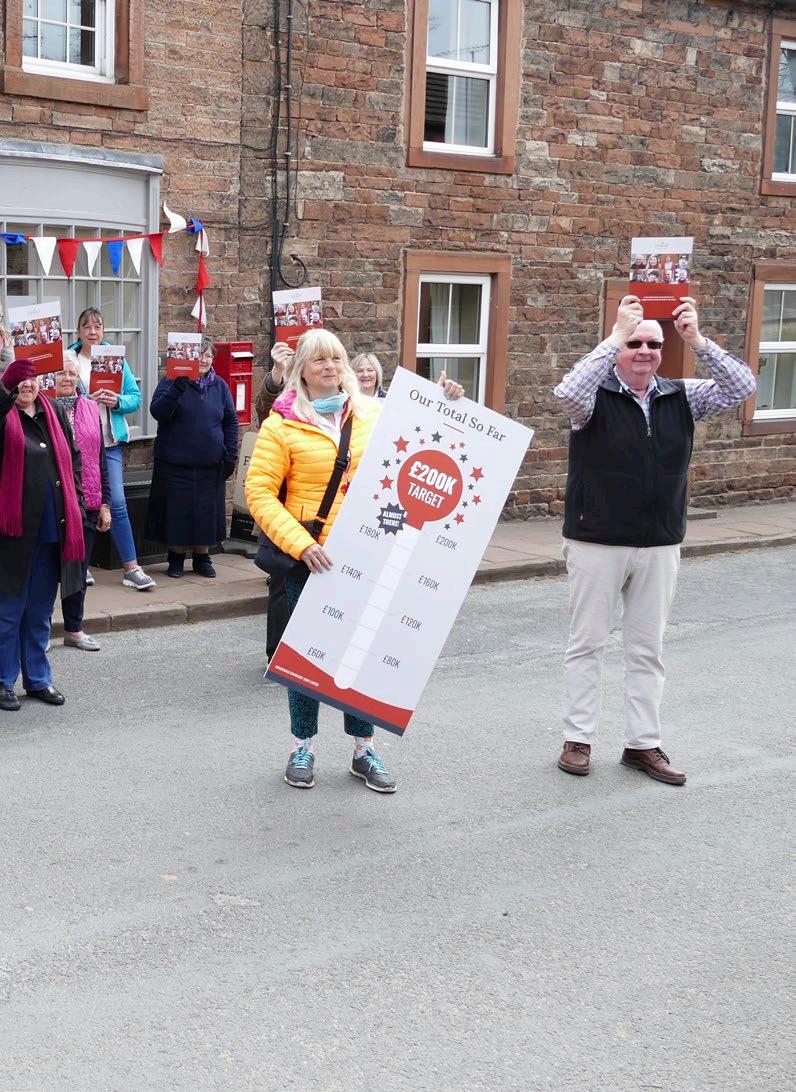
THE PEOPLE
Redoubtable, reliable and resistant to radical change; there are few things in the typical English village more valued by residents than the shop and the pub
by Rob Crossan
INSPIRE 55

THE VILLAGE SHOP SAVIOUR
Ruth Anderson
“I really did have no idea just how much people love pork pies until I started doing this!”
So says Ruth Anderson, resident of the remote Cumbrian village of Kirkoswald for the last 12 years and one of the leading voices behind the rescue of the village’s last surviving shop.
“So far we’ve sold 195 kilos of bananas, 360 pork pies and £1,400 worth of locally made sandwiches and cakes", says Ruth, calculating the booming sales that have made the cash register trill in the first six months the shop has been open.
Once home to seven shops in its Victorian heyday, when there
was a regular market in the village, Kirkoswald’s very last store closed during the early stages of the pandemic when the owner died from the coronavirus.
“It was incredibly sad, but we really had to move fast to make sure that the shop didn’t close for good,” said Ruth.
“It became pretty clear that the trust that owned the shop were going to disinvest in various things and our shop was going to be one of them. So we managed to save it before it became mothballed.”
Ruth and a group of fellow villagers began a share scheme to raise the £200,000 needed to save the shop. With shares priced at just £25 each
56 • MAY 2022
their community benefit society operated on the proviso that it didn’t matter how many shares you bought, everybody got one vote.
With ex-villagers living as far afield as Cyprus contributing to the campaign, Ruth was astonished to find that, within six weeks, they had raised over £200,000 to keep the shop open. It now operates six and a half days a week, manned entirely by volunteers.
“We’re an extremely rural community and the nearest town is nine miles away so, for a lot of people, going to the shop is absolutely essential, not just for getting goods but for having a chat and meeting people too,” says Ruth.
Learning to run a shop from scratch hasn’t been without some minor hitches. “We’ve all been on a learning curve about every element of running a shop,” Ruth admits. “Supply issues with HGV drivers affected us in the summer when our order of ice cream was three weeks late. By the time it arrived it really wasn’t ice cream weather up here anymore! It’s all part of the process though—thankfully the community here are so supportive. Some of the older villagers can remember coming into the shop and watching television as the shop had the very first one in the village! That’s how far it goes back. It’s been a central part of their lives."

And much as raising the sums of money that the Kirkoswald shop has achieved may seem daunting, Ruth is convinced that the same thing can be done in any village where the convenience store is under threat of closure.
“My advice is don’t try and do it on your own; you have to talk to people and make sure that as many people in your village [as possible] are on side with you,” says Ruth. “And you really do have to talk about it all the time. Don’t be afraid to chat to everyone you meet about what you’re trying to do. Use social media as much as you can and just keep pushing!”
kirkoswaldshop.co.uk


READER’S DIGEST
THE PUB RESCUER Dave Webber

What happens when you need to raise £75,000 in less than a week? As Dave Webber, chair of the Trawden Forest Community Pub Group recalls, you reach out to the biggest audience you can find.
“We needed half a million pounds to buy our village pub,” says Webber. He's referring to the Trawden Arms, the eponymous pub of the Lancashire village lying between the old cotton mill towns of Colne and Nelson.
“We were incredibly lucky that the Daily Mirror got wind of what we were doing and launched a campaign. It wasn’t just one incredibly rich person who saved
us. It was hundreds and hundreds of small donations.”
There are now 400 shareholders in the 126-year-old Trawden Arms, which is 300 more people than the pub can actually accommodate. Luckily, there's plenty of other space in this village which, uniquely in the UK, also has its community centre, village shop and post office in community ownership.
“The owners of the pub wanted to sell up to spend more time with their children,” says Webber. “And so we looked into how we could stop the building being closed or turned into housing. We did a huge survey in the Villagers enjoying the Trawden Arms
58 • MAY 2022 POWER TO THE PEOPLE
village and got over 800 responses, which isn’t bad for a population of less than 2,000. It was reassuring to know that 99 per cent of locals wanted a village pub. But it was fascinating to see what else people wanted; including getting rid of the TV and the pool table.”
Previously run for commercial profit, the Trawden Arms—which was re-opened

in November 2021 by new tenants
Adam Young and Jo Stafford—has plans for craft classes, friendship groups, morning coffees and a menu rich in locally-sourced produce.

“My advice for anyone trying to do this would be don’t assume that your mates are the best people for the job,” admits Dave who confesses to ditching his initial team in favour of one which had the financial, technical and practical skills to rescue the Trawden Arms from closure.
According to the Plunkett Foundation, a charity set up to support communities in similar buy-out schemes, in 2001 there were five community-owned pubs in the UK. Now there’s 150 with another 250 in the pipeline.
“What I’d really like to do is get the place as locally-minded as possible,” admits Dave. “I don’t know how possible this is going to be, but I’d love to be able to get some of the villagers' home brew served behind the bar. I like the idea of someone asking who brewed the pint they’re drinking and being able to point to the person who made it—sitting right behind them!”
trawdenarms.co.uk
MAY 2022 • 59 READER’S DIGEST
Adam & Jo, tenants of the Trawden Arms
THE CALL BOX CAKE MAKER
Holly Ford
When Holly Ford walked past a longdisused phone box on the outskirts of her home village of Cladich, near Inverary in Argyll, Scotland, in 2017, an idea began to form which combined her love of baking with a new use for the box, which at that point was ignored by almost everyone—including the field of Highland cattle that grazed behind it.
“It’s been amazing how much support we had from the outset,” said Holly, who got permission from the community council to use the call box. Others have taken advantage of the "Adopt A Kiosk" scheme run by British Telecom where it’s possible to buy a phone box from as little as £1 and adapt it to new uses.
“Nobody told us it wouldn’t work, but we did get a few locals who thought that people would just help themselves to cakes without paying.”
These concerns proved to be wholly unfounded. The honesty box—which is located next to the shortbread, cookies, lemon drizzle cakes, jams, eggs and candles— has always been used correctly by customers, claims Holly with the box remaining entirely unstaffed.


POWER TO THE PEOPLE
60 • MAY 2022

“It’s a surprisingly busy stretch of road for traffic in the summer,” Holly remarks. “And we do get quite a few notes that people leave for us saying how much they like the idea.”
Only open during the summer months, Holly has turned the box into layers of shelves for her cakes and other local produce. Able to make close to £100 a day in peak summer months, she also runs regular charity bakes in the community.

“It’s a very remote place,” she tells me. “And I’m not sure the honesty box approach would work in a more urban area. But for where we live it’s perfect and it’s surprisingly easy to make something like this happen. It’s really important to put in the work on social media and to keep your self-belief in the idea.”
Cakes In The Call Box also puts Holly in the position to judge which cakes most tickle the taste buds of passing travellers with a sweet tooth.
“The brownies are the go-to, always,” she tells me, “though I do like expanding the range. I’m working on Swedish buns with cardamom at the moment. The only thing is that I can’t get them to rise at the moment! I’ll keep on working on it at home though, so maybe next summer they’ll be in the box!”.
facebook.com/cakesinthecallbox


READER’S DIGEST
Holly Ford (right) with her Cakes in the Call Box co-founder Bron (left)

To celebrate the 100th anniversary of Reader’s Digest we’re relaunching our much-loved 100-word-story competition with prizes of up to £1,000 to be won

Our 100-word-story competition is your chance to show the world your story-telling talents. There are three categories—one for adults and two for schools: one for children aged 12–18 and one for children under 12. Your stories should be original, unpublished and exactly 100 words—not a single word
shorter or longer! Entries are now open. The editorial team will pick a shortlist of three in each category and post them online on June 1. You can vote for your favourite, and the one with the most votes will scoop the top prize. Voting will close on May 1 and winners will be published in our September issue.
IN ASSOCIATION WITH
Visit readersdigest .co.uk/100-word-story-competition to enter












Excellent light, it’s made reading so much easier.
 Mrs Verrell East Sussex
Mrs Verrell East Sussex


















































Read in comfort for longer
Do you struggle to see small print and detail, even with reading glasses?
The right light is just as important as having the right lenses - it helps you enjoy cherished hobbies for longer in comfort, without straining to see.
Serious Lights bring daylight indoors. They use bespoke
technology to deliver incredible clarity that lets you lose yourself in your favourite books without experiencing the uncomfortable e ects of eyestrain.



See the di erence with your own eyes and rediscover your love of literature. Enjoy clear detail again
30 day in-home trial
Recommended by over 500 opticians

Compact Light WORTH £150 with any Serious Light order when you use code 100W2, while stocks last FREE







giL h t u p yourlife indoors ™ Readers ® For
085 1088 seriousreaders.com/100W2
Advice. For a Brochure. To Order: 0800
HAND M ADEIN GREAT BRITAIN DAYLIGHT WAV E LENGTHTECHNOL O G Y ( T )M

64

Great Yarmouth My Britain:
By Anna Walker
Perhaps Norfolk's most famous seaside resort, Great Yarmouth has been welcoming seekers of sun and fun since the 1800s, when the opening of the railway and its two piers marked it out as an ideal holiday spot for Victorians seeking the fresh sea air.
Today, it's the Pleasure Beach, Sealife Centre, Hippodrome Circus, Winter Garden and warm community spirit that tempts visitors back every summer. Not to mention its 15 miles of sandy beaches, variety of eateries and traditional seaside accommodation.
Great Yarmouth has so inspired its visitors over the years that it's appeared in a number of literary works, perhaps most famously as the setting for Charles Dickens' David Copperfield. And for those sick of the seascape, the town borders with the Norfolk Broads. A national park since 1988, the Broads are known for their wide open skies, rolling hills and plethora of wildlife, including common harbour and grey seals.
We spoke to two lifelong residents of Great Yarmouth, who are also fundamental players in the town's tourism industry, for an insight into what makes the seaside spot so beloved by locals and visitors alike.
INSPIRE 65
MAY 2022 •
AARON JONES
Aaron Jones is Director of Business Development at the Pleasure Beach
I was born in the James Paget Hospital and have many fond childhood memories living in the Great Yarmouth area. The thing I love the most about Great Yarmouth is the beach and the sea. I love walking my dogs on the beach, with the sun beaming down on the sea. It’s very peaceful. I hold a great deal of pride being from Great Yarmouth, as the town has an enormous amount of history and my family's roots here go all the way back to the 1950s. The spirit of Great Yarmouth, especially during the spring, summer and autumn, is a very vibrant one with smiling faces covered in ice cream and sugar from the those round things with the hole in the middle.
I think people’s preconceptions of Great Yarmouth are mostly really good because they’ve got lovely childhood memories of coming on holiday here. On the other hand, I have heard some people with the view that Yarmouth is a run-down, somewhat deprived area of East Anglia's coastline. It frustrates me when people have that view, as the town has improved so much, especially in the last few years. I think with the considerable amount of funds being invested in the area, it’ll continue to improve and surprise many people who perhaps previously held an unfavourable opinion of the town. By

people coming here and seeing what we have to offer now, I believe we would overturn many of those more negative preconceptions.
The Pleasure Beach is a family-run business based at the south end of Great Yarmouth’s golden mile seafront. It’s a special part of the town as it holds so many happy memories for families over the generations. You see grandparents bringing their grandchildren to us, and years prior to that day, their grandparents would’ve brought them along as children. It’s a special place with lots of traditional fairground rides, but we also believe that it’s very important for us to keep bringing some newer rides in, to keep the place looking fresh and cater to all audiences. Everyone knows how special the Scenic Railway is and this year marks the 90-year anniversary of the ride being in the location it still sits in today.
My favourite spot in Great Yarmouth is the area of sandy beach directly opposite Barnard Bridge. My grandparents lived in the house on the corner facing the sea, and I spent a lot of time on that area of the beach as a kid. It’s a special place for me.
66 • MAY 2022 MY BRITAIN: GREAT YARMOUTH


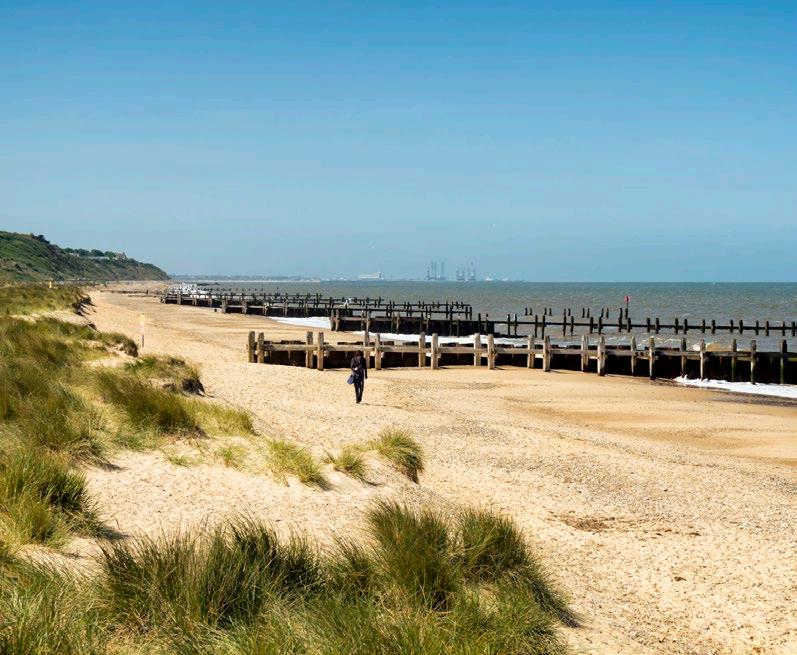
67



68

JACK JAY
Jack Jay is the ringmaster and director of the Hippodrome Circus building
I was born in Great Yarmouth and have always proudly called it my home. Our family business has been in the entertainment scene here for over 100 years, with many iconic venues across the town, including the Hippodrome. I have such a passion for continuing that legacy. Great Yarmouth is a place of uninhibited expression, where fun is very much encouraged. It has an amazing history and one which is always evolving and growing.
I think there are preconceptions around places like Great Yarmouth. The British seaside has been through a tough time since its last peak in the Eighties. The idea that these are somehow bleak or depressing places to live is laughable to me. We have one of the best sea fronts and beaches in the country and are surrounded by spots of natural beauty. I have new neighbours from our nearest city, Norwich, who have just moved and are immediately loving coastal life. I live right on the historic riverside, which is amazing. Taking my dog Olly out for long walks on the beach is something that never gets old. But I would unsurprisingly have to say that the historic Hippodrome Circus is my favourite place, not just in Great Yarmouth, but on Earth. It's so special to
me and to our town—it's a place that sparks so much local pride and quite rightly has national and international acclaim. It's crazy to think that Britain's last circus building, and one of only three in the world with an original sinking ring feature, is on a back street of this small seaside town. Being the ringmaster and producer of The Hippodrome Circus has given me the chance to spread so much joy. To be able to entertain and bring together multiple generations at the very same time is something that is getting extremely rare these days. It's also incredible to be able to meet performers from all across the globe, who come together for a short period to create absolute magic.
Circuses and seasides have shared DNA. Both are British institutions (not many people know that the circus was invented in Great Britain) and have found ways to evolve and thrive across many different eras and generations. Most importantly they're designed for fun! The seaside is a space to be enjoyed in its many forms, from relaxing duneswept strolls to exhilarating roller coasters or jaw-dropping circus stunts!
For more information visit pleasure-beach.co.uk hippodromecircus.co.uk and visitgreatyarmouth.co.uk
MAY 2022 • 69
READER’S DIGEST
If I Ruled The World Grace Dent
Grace Dent is a restaurant critic, broadcaster, author, and Masterchef UK regular. She has appeared on Very British Problems and is the host of the critically acclaimed podcast, Comfort Eating

We would have a compulsory half hour of “keep fit” per day, away from the internet. My theory is that almost all internet arguments would be solved if we were all forced to walk away from our computers and do star jumps in fresh air. I think that a lot of our anger comes from the fact that we’re just not getting enough of it.
Kindness to animals would be compulsory. People should wear their animal love on their sleeves more. Once a year, we would have a national day completely devoted to animals; everybody would be allowed to have the day off and just spend their time
with their dog, cat or hamster. I think sometimes people are embarrassed to say that they love animals as much as they love humans. And I guess that I am as well. I wish that I could talk about that more freely. I’m always happy when I meet other people who feel the same way, and devote their lives to taking in stray cats and dogs, and raising money for animal charities.
Michelin-starred dinners for everybody! We live in a world where we hear about these places a lot. In Britain, it’s set up as the pinnacle of experience to go there and eat this food, but in reality, for almost
70
• MAY 2022
99 per cent of the country, it is unattainable. It’s incredibly expensive, it’s intimidating, it might be far away, so people just don’t go. They might watch MasterChef but they may never witness the theatre and ridiculousness of a two-Michelin-star restaurant for themselves. When I come to power, everybody will get a voucher and be allowed to go to Le Gavroche, and see what the heck is going on inside it. Also, I would really like some of the two-Michelin-star chefs to have to deal with people from Carlisle, where I’m from, asking where the rest of the dinner is when it arrives on the table.
I would give Cumbria its rightful position as the greatest county in Great Britain, usurping Yorkshire. Although Yorkshire is incredibly beautiful, it does irk me to put on my TV and find five shows telling me how wonderful Yorkshire is. Cumbria is a place of such exquisite natural beauty that I feel shortchanged. The mistake people make is that they go northwest, into the Lake District and they look at a mountain, then they visit Keswick or Windermere, get back on the M6, and go straight to Scotland. But what they don’t realise is that there’s hundreds of square miles of Cumbria that they never look at.
I would raise awareness of Alzheimer’s and dementia. Not only is it a disease that’s growing as our
population ages, but it’s a thing that is so terrifying that people just blank it out. And, because of that, we are overlooking the thousands of families in the UK who are dealing with it. My father has dementia and he is pretty well cared for. But there was a long time in my family, where we were in hell. We didn’t ask for help and when we did ask, we didn’t know what we were asking for. I support Alzheimer’s charities now and try to help as much as I can. But I do think we should be talking about it more because there’s people all over the UK right now who are in a kind of a prison, caring for people who have got dementia.
It makes your world very small, and I’m passionate about getting the word out that you’re not alone.
All British people would be made to learn another language. I studied French—really badly—for seven years, in a school in the north of England. I wasn’t very committed, I just did it because I kind of had to. And this has really bitten me on the bum years later, because now I’m surrounded by French people all the time. So, when I come to power, all British people will embrace learning other languages and not just think they can speak louder in English, and things will work out. n
As told to Eva Mackevic
Tickets for The Podcast Show 2022 are on sale at thepodcastshowlondon.com
MAY 2022 • 71 INSPIRE

Millions of seniors are heading back to work—and leading happier, healthier lives because of it
By Susannah Hickling
Meet The
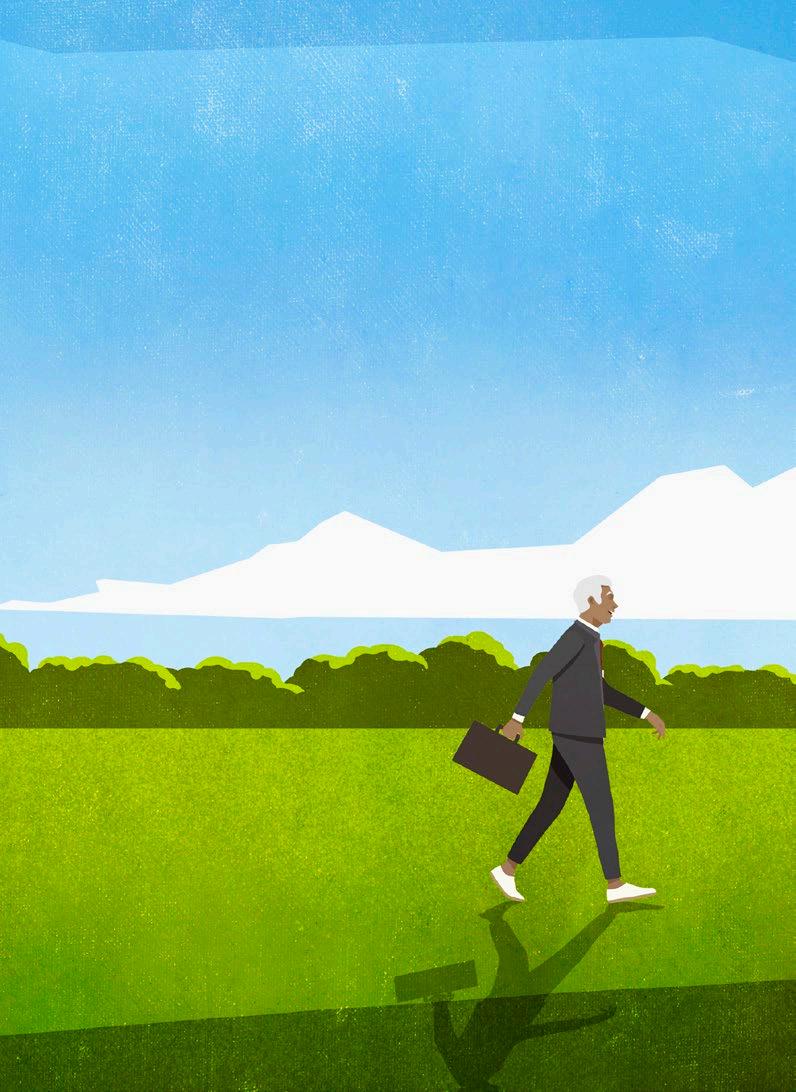
“Unretired”
INSPIRE 73
EVERY MONDAY MORNING retired general practitioner Dr Dominique Hérault leaves his home in northwestern France and drives 25 miles to work at an unusual health hub. The medical centre, set up to address a shortage of local GPs, is entirely staffed by retired doctors and medical students.
All over Europe, people are reaching retirement age, taking a pension, and then getting a job. According to the most recent Labour Force Survey, more than 5 million of the 200 million Europeans working in 2019 were over the age of 65, marking an increase of 82 per cent in 15 years.
Reasons for joining the ranks of the socalled “unretired” vary, though only a fifth of workers over 65 take jobs solely out of financial necessity, according to Eurofound, the European Foundation for the Improvement of Living and Working Conditions. Most do it because they love their jobs: EU statistics show that 93 per cent of earners aged 65 to 74 are happy in

Research shows the unretired have better mobility, feel healthier, and report a better quality of life
their employment. This return to the workforce keeps economists happy too. “More employment among people post-retirement stimulates the economy and is good for everyone as long as they want to work,” says Hans Dubois, research manager at Eurofound.
While it’s possible that older and younger generations sometimes compete for jobs, Dubois points out that parttime work and certain positions—like ones that involve mentoring—may actually be better suited to older employees.
There are also clear mental and physical health benefits when pensioners pursue an occupation. Research based on the ongoing Survey of Health, Ageing,
MEET THE UNRETIRED 74 • MAY 2022
illustrations: © Malte Mueller via getty i M ages
and Retirement in Europe (SHARE) shows the unretired have better mobility, feel healthier, and report a better quality of life than their retired peers. In addition, they are less depressed and have a sharper memory.
Here are the stories of four people who opted for unretirement and aren’t looking back.
Ljuba Medak, 69 PIRAN, SLOVENIA

Standing at the front of the classroom, Ljuba Medak asks her students to open their atlases. They turn to the section about Norway. “Where are people better paid, in the north or the south of the country?” she asks the group.
This is no ordinary school and Medak no ordinary teacher. Her class is made up of eager mature students, members of the Koper, Slovenia, branch of the Third Age University (U3A), an international network of organisations where older people learn for fun. Medak freely admits the best day of her career was in 2014—when she retired from the secondary school where she’d taught geography. Why, then, did she return to the classroom just a week later?
“I love to spread my knowledge and enthusiasm,” she says. And this time, she can do things on her own terms.
Like more than half of European workers over 65, she works part time, teaching just a few hours a month. No more preparing 18-year-olds for stressful exams, writing evaluations, or being accountable to the Slovenian Ministry of Education. “I’m much freer,” she says. Medak had led some U3A classes before retiring, and they’d attracted large numbers of enthusiastic students, so she carried on. She’s allowed to work a maximum of 720 hours a year without jeopardising her pension.
Medak’s mission is to open people’s eyes, whatever their age, to the world around them. “People don’t need any more data,” she says. “They need explanations. They must think about the things they see.”
Bringing her students on field trips
all photos courtesy
Teaching other adults part-time has been freeing, says Ljuba Medak
MAY 2022 • 75
gives them the chance to do just that. Recent outings include visits to the geological institute in the capital Ljubljana to learn about fracking, and to limestone caves boasting natural bridges and waterfalls.
Taking a job after retirement is unusual in Slovenia, where you can access your pension at age 60 if you have 40 years of service. Only 6.6 per cent of Slovenians aged 65 to 69 work, compared to the EU average of 13 per cent.

Dr Dominique Hérault is happy to be of service to patients
Medak likes to meet friends for coffee or to play boules or cards, but working offers something different. “When you’re older you can become less tolerant,” she says. “There’s a saying: ‘If you’re alone at home, you’re always in good company.’ We must avoid this way of thinking.”
Dr Dominique Hérault, 71 SAINT-SATURNIN-DU-LIMET, FRANCE
Dr Dominique Hérault closed the door of his surgery for the last time in May 2016 after a 37-year career as a general practitioner. Eight months later, the pensioner heard from a friend who chaired the French Order of Doctors in the department of Mayenne, where Dr Hérault lives. Hundreds of patients in the nearby town of Laval were without a GP. Would Dr Hérault head up a new
health centre there, staffed by retired doctors and medical students?
Despite enjoying his newfound freedom, he says, “I thought, why not? It gave me the opportunity to get back to work, which I love to do.”
The statutory retirement age in France is currently 62, but Dr Hérault found plenty of retired doctors in the area were keen to join him. “First of all, we’re all passionate about medicine!” he says. “Secondly, we can be of service. Thirdly, we can supplement our pension.” According to the National Committee of the French Order of Doctors, the number of retired doctors still practising leapt by 226 per cent between 2010 and 2020. The Henri Dunant Medical Centre in Laval opened in June 2017. The retired GPs each work four days a
76 • MAY 2022
MEET THE UNRETIRED
month, while four medical interns each come in once a week. All told, the doctors at the centre care for about 4,000 patients. Dr Hérault regularly does 30 consultations over the course of a ten-hour workday. Despite the gruelling pace, he insists that “one day a week isn’t tiring.” There’s still plenty of time for gardening, golf, his seven grandchildren, and other activities, like helping his son build an extension on his home.
The interns come to the older doctors for advice and there are joint consultations on complicated cases. The experienced GPs teach trainees how to properly examine patients, and the students bring their older colleagues up to date on medical guidance. Dr Hérault sees his job as a win-win situation on multiple levels. “Working with young people is energising,” he says. “I’m doing something that’s good for my mind and my body, and I’m bringing something to society.”
Dr Hérault plans to carry on for another two or three years until enough new GPs finish their training. For now, his patients are just thankful they finally have a doctor to consult— whatever his age.
Francine Pirlot, 67 LILLOIS-WITTERZEE, BELGIUM
This morning, as on most mornings, Francine Pirlot is seated at her sewing machine. Surrounded by rolls of
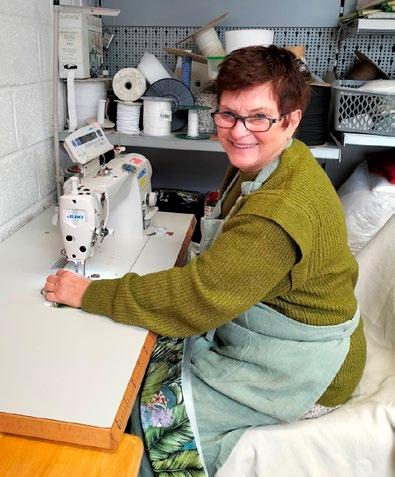
For Francine Pirlot, sewing boosts her mood and her income
cloth and peering over her reading glasses, she is busy making blinds for an embassy in Brussels. The smallbusiness owner spends about 50 hours a week in her workshop.
“I adore working with fabric,” she says. “It’s creative. You start with an ugly piece of material and turn it into something beautiful. When you see the photos in a client’s home, you think, That’s quite pretty. I’m proud of my handiwork.”
Since Pirlot took it up 30 years ago, sewing has been a financial lifeline— and she wouldn’t have it any other way. When her children were small, it allowed her to better support her family after her divorce. These days, there’s the rent on her home and other bills to pay, plus she likes to treat her children and grandchildren,
MAY 2022 • 77

so working helps her supplement a state pension that was, until recently, just 525 euros a month (the government has since increased it). Pirlot’s small pension was the result of working with her ex-husband as an épouse-aidante (a spouse-helper) at their cocktail bar for 15 years. There were tax and social security advantages to this arrangement, but when the couple split up, it meant Pirlot hadn’t made the necessary contributions to have a decent pension in her own name.
Three years ago, Pirlot reached state retirement age—currently 65 in Belgium but going up to 67—yet continues to produce soft furnishings. “I make a good living,” she says. Still, she has flexibility. Like almost 42 per cent of European workers aged 65 to 74, Francine is self-employed; if she wants to take time to see her family, go to the cinema, or take a holiday, she can. Pirlot shares her workspace with an interior decorator and friend 20 years her junior. Customers at their shop, La Maison de Florence Côté Déco, sometimes think they are mother and daughter. Their two cats sleep in the window display and are local celebrities with devoted fans (a sample message sent to the shop’s Facebook page: “That wicker chair
Derek Myers now works from home and can walk his dogs as much as he wants
isn’t very comfortable for the cats. You need to put a cushion on it”).
Sitting at home doing nothing isn’t an option for Pirlot. “Working is much better for my mental health,” she says. “Every day I get dressed up out of respect for my clients. Even if I didn’t work, I’d do some volunteering or give sewing classes. You have to have an aim to your day.”
Derek Myers, 71 BUDE, UNITED KINGDOM
Five years ago, at the annual sales conference of the electronic security equipment company he'd helped run for two decades, Derek Myers was about to announce he was retiring. Then his business partner said, “We’ve got more work for you to do. You’re not retiring, so don’t announce it! We need your knowledge.”
At first Myers was shocked. He and his wife, Christine, had already moved from London to the seaside
78 • MAY 2022
MEET THE UNRETIRED
town of Bude to be closer to their children and grandchildren. But he quickly warmed to the idea of working part-time from home with just the occasional business trip. As a full-time director, he had sometimes been abroad for months at a time installing equipment and training people to use it. “Travelling takes it out of you,” he says. “I’ve had deep-vein thrombosis twice from flying.”
In the UK, there's been an 88 per cent jump in workers over the age of 70

Now Myers works “a little bit every day” from his home office, in between taking the couple’s dogs out and running a local camera club with a friend. He has much less stress. “If it gets to be too much, I go down to the coastal path or the woods. I can get away.”
On a recent visit to the office 150 miles away, he met up with the company's 90-year-old chairman. “I come in to keep my mind going,” the man told Myers over coffee. Respect for age and experience is baked into the business's culture. Their overseas clients, especially
in the Middle East and Africa, value what Myers brings to the table at this point in his career. “They listen to you more than younger employees,” he says. “It’s very rewarding.”
Myers is part of a growing trend. According to Rest Less, a UK digital information resource for people over 50, the number of workers 70-plus in the UK has jumped from around 256,000 in 2010 to more than 480,000 in 2020—an 88 per cent increase. One quarter of retired Britons have rejoined the workforce, according to a 2017 study. And the average age of workers is likely to continue to rise in the UK as the official retirement age climbs to 67 over the next few years, putting it on par with Germany, Italy, and the Netherlands.
A strong advocate of unretirement, Myers plans to carry on until he’s 75. “A lot of people don’t want to work, or can’t for health reasons,” he says. “That’s fine, but those who do want to work can give a lot back.” n
The Liking Gap
"The Liking Gap" is a psychological phenomenon wherein people you meet like you more than you think. Researchers in 2018 found that "people systematically underestimated how much their conversation partners liked them and enjoyed their company"
Source: https://journals.sagepub.com/doi/abs/10.1177/0956797618783714
MAY 2022 • 79 READER’S DIGEST
STRADIVARIUS SavingThe SOUND


INSPIRE
80
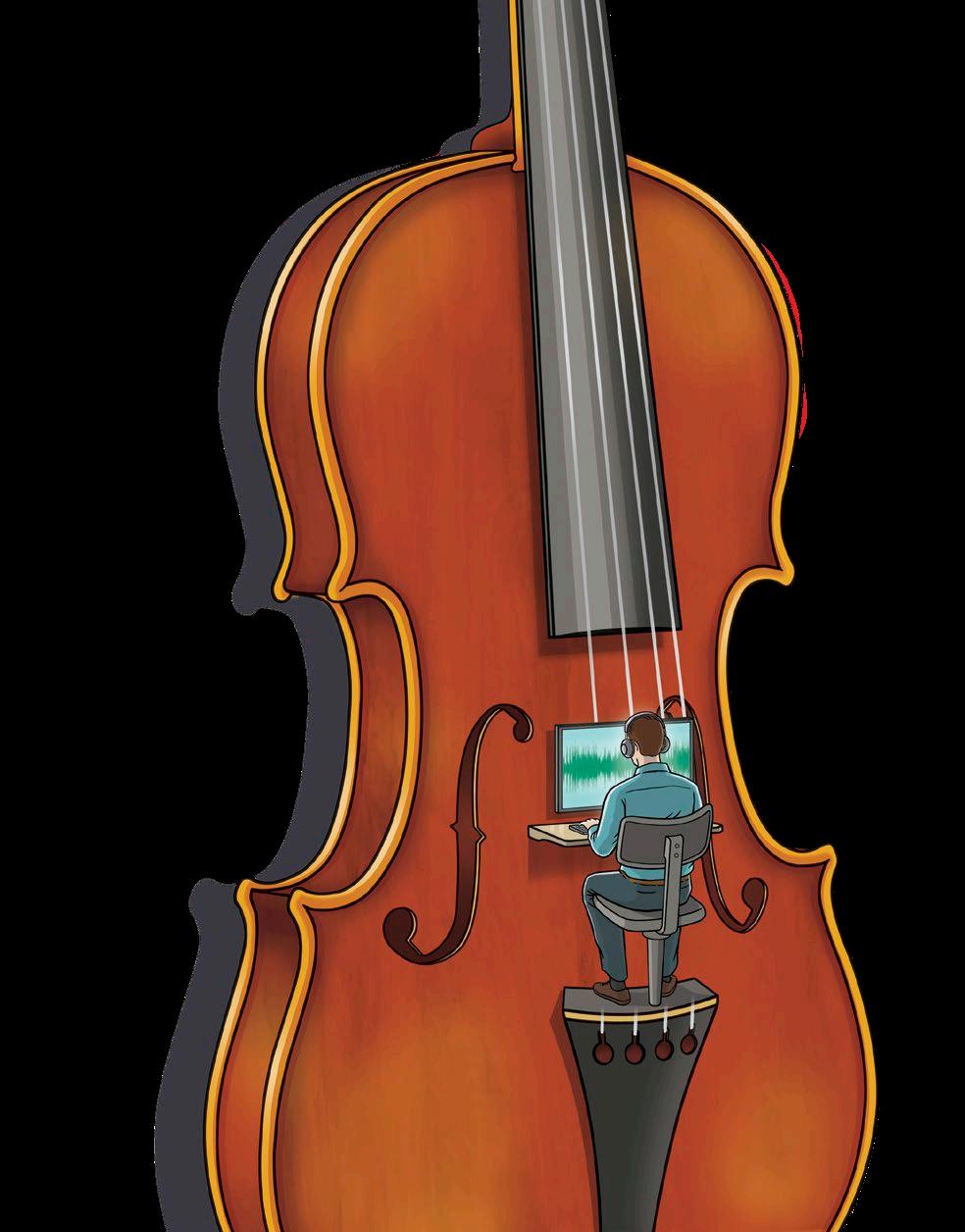
Antonio De Lorenzi takes a seat onstage in the concert hall of the Museo del Violino in Cremona, Italy, and carefully tucks a Stradivarius under his chin. The violin, crafted in 1727 and called Vesuvio, gleams in the soft light of the auditorium. Through an earpiece, the soloist hears a metronomic beat as a voice says, “Go.”
De Lorenzi draws his bow across the lowest string and plays G for half a beat. He pauses, then follows with A-flat. Then A. He moves up the scale, never changing his pace as he works through all four strings. Once he finishes, he repeats the exercise, this time sounding each tone just a bit faster.
NO ONE HAS EVER REPLICATED THE BEAUTIFUL SOUND OF A STRADIVARIUS
This is no ordinary concert. Outside, police have cordoned off the street to traffic. Inside, workers have shut down the heater despite the winter chill, dimmed the lights, and unscrewed buzzing bulbs. As each note reverberates, an audience of 32 microphones dotted throughout the auditorium silently listens.
De Lorenzi’s performance in January 2019 is part of a campaign
to preserve the Stradivarius sound. Although many of the approximately 1,100 stringed masterpieces that Antonio Stradivari and his sons handcrafted in this city have endured for three centuries, they are still mortal. Almost half have been lost to accidents or the wear that comes with age. Of the 650 or so that survive, some have grown too fragile to play.
Stradivari remains the defining figure in violin-making, a name on a par with Chanel or Ferrari. He fashioned instruments for kings and cardinals, and his creations bring their distinctive voice to the repertoires of modern soloists like Itzhak Perlman and Anne-Sophie Mutter. Musicians, luthiers (stringedinstrument makers), and scientists have tried for centuries to figure out what gives a Strad its beautiful sound, yet no one has ever replicated it.
And so the goal is to create a digital archive that will survive long after the last Stradivarius falls silent, allowing composers and artists to continue making music with them.
SAVING THE STRADIVARIUS SOUND 82 • MAY 2022
P hoto S , P reviou S SP read and thi S one: iS abella de m addalena/ t he n ew York t ime S /redux

De Lorenzi proceeds, working through scales at varying tempos, intensities, and volumes with the precision and passion he’d bring to a Dvorák symphony or Verdi opera. In a soundproofed room tucked beneath the auditorium’s seats, audio engineer Thomas Koritke, whose company will create a virtual version of the instrument, listens through speakers as his computer records it all. He will do this every day for five weeks, meticulously documenting thousands of variations of the sounds
Vesuvio and three other masterworks of its era can produce.
“These instruments have been played for 300 years,” says Fausto Cacciatori, a curator at the Museo del Violino. “We are committed to making them play for another 300.”
The
Museo del Violino, which opened in 2013 to celebrate the work of Stradivari and others, sits in the heart of Cremona. The ancient city, about 45 miles from Milan, began as a Roman colony
MAY 2022 • 83
Recording sessions were held in the concert hall of the Museo del Violino

in 218 BC and developed a rich, cosmopolitan culture under Spanish, French, Austrian, and Italian rule. By the 17th century, the city was home to a thriving community of instrument-makers.
It was Stradivari, born around 1644, who combined three key innovations that helped accelerate the violin’s transition from the chamber rooms of the baroque period to the concert halls of the classical. He designed his offerings slightly larger than those of his contemporaries; he created fuller arching for the top plate, called the belly, and the back; and he modified the thickness of both the top and back plates.
These changes provided a powerful sound and projection.
“He perfectly understood the new requirements of the violinists of the time,” Cacciatori says.
The material used to craft any stringed instrument contributes to its sound. Violin-makers have long considered spruce ideal for the belly; its grain has the strength to endure the tension of taut strings, yet provides enough flexibility to vibrate freely. For the body and neck, luthiers favour maple for its ideal mix of strength, resonance, and aesthetics.
Retired biochemist Joseph Nagyvary, who also builds violins,
84 • MAY 2022
P hoto: iS abella de m addalena/ t he n ew York t ime S /redux
Instruments by Antonio Stradivari and other great craftsmen at the Museo del Violino
has spent four decades seeking Stradivari’s secrets. He believes Cremonese luthiers used borate and salts of copper, iron, and chromium to prevent woodworm infestations, and that some of these materials stiffened the wood and improved its resonance.
He also suspects that Stradivari took the added step of smoking the timber in his chimney. Beyond killing pests, the practice would have reduced moisture, giving his instruments superior tone. “You cannot have a Stradivari sound unless your wood is preserved and restructured by chemical manipulations,” Nagyvary says. Research at National Taiwan University in 2017 bolstered this idea.
All this speculation stems from the fact that Stradivari didn’t share his methods. He left no notes, no diaries, nothing to reveal definitively how he built his instruments. Science can provide clues, but few believe we’ll ever completely solve the mystery. We are left only with the sound.
The idea for Koritke’s endeavour started around 2015 with a sound engineer named Leonardo Tedeschi. The former DJ was working on a project using a software program from Koritke’s company, e-instruments, that replicates an 11-piece string ensemble. Tedeschi found it so impressive that he wanted to create a similar tool for Stradivarius violins.
He pitched the idea to Koritke, who immediately saw an opportunity to preserve an irreplaceable masterpiece.
The Museo del Violino’s auditorium, designed to reverberate perfectly the sound of stringed instruments, was an ideal venue. “When I saw the concert hall, I thought, This is something really extraordinary,” Koritke recalls. Yet he worried about ambient noise,
IN ALL, ABOUT 1 MILLION INDIVIDUAL AUDIO FILES WERE CAPTURED
proceeding only after city officials promised to mitigate the interference.
Koritke planned to record a lone Stradivarius violin, but after discussing the project with museum staff, chose a string quartet. In addition to Vesuvio, the combo included a violin created by Giuseppe Guarneri named Prince Doria, a viola by Andrea Amati known as Stauffer, and a Stradivari cello also called Stauffer.
His team spent three years planning the undertaking, writing out the thousands of articulations of every sound the instruments can produce. “This was quite a challenge,” he says. “Most of the musicians had never done that kind
READER’S DIGEST MAY 2022 • 85

of an exercise.” Koritke’s crew spent a day setting up all the recording equipment and another three arranging the array of microphones. During each phase, the musicians would run through scales and arpeggios at varying volumes and tempos, performing dozens of intonations of every note. They repeated the routines for hours at a time, using different bowing techniques or by plucking the strings, playing thousands of transitions with exacting precision.
“Sometimes the musicians would stop at a certain note because they weren’t happy, but we thought it was OK,” Koritke says. “They would say, ‘No, I don’t like this part; let’s do it again.’”
Outside noise frequently disrupted the process. Although city authorities
closed streets near the concert hall as well as a nearby parking lot, bicycle tires rolling on cobblestones, barking dogs, and clinking glasses in the museum cafe all interrupted the sessions. That prompted the mayor to urge Cremona’s 70,000 residents to keep quiet in the area, though there wasn’t much anyone could do about the peal of church bells or the drone of aeroplanes overhead.
In the end, Koritke captured about 1 million individual audio files. His team culled the trove to create virtual versions of the instruments that anyone can add to recording programs like Pro Tools. That meant choosing the most musical and precise instance of every tone, a process that took over a year.
Tedeschi is eager to see what musicians create with the digitised
86 • MAY 2022
P hoto: iS abella de m addalena/ t he n ew York t ime S /redux
Thomas Koritke oversees a digital recording from underneath the concert hall
string quartet. He sees the software, now available for purchase, introducing the instruments to new audiences through entirely new styles, including DJs doing “crazy stuff” with a Stradivarius violin. “You can use it in a lot of genres,” he says.
The question is, will anyone realise it’s a Strad?
The premise of Koritke’s Stradivarius project rests on the idea that nothing sings as finely as the original. Joseph Curtin isn’t sure that’s true. He took up the violin at age ten and started making them about a decade later, in 1978. Like many luthiers, he developed an abiding fascination with Stradivari and his peers, and hoped to replicate the tone of their masterpieces. Curtin began pondering theories to explain their superiority until a physicist friend suggested he first prove that Strads truly do eclipse all others. “That’s when I realised there was no scientific evidence suggesting the old Italian instruments sounded better than modern ones,” he says.
That prompted Curtin and three other researchers to conduct studies from 2010 to 2013. Professional soloists wearing dark goggles played a variety of violins including Strads and new
instruments: just over half preferred the sound of the modern models, and could not identify the Strads with better than coin-toss accuracy.
That, of course, does not diminish the quality of Stradivari’s masterpieces, or his contributions to the art of making violins. “I don’t have one whit less reverence for his work,” Curtin says. “I am just challenging the notion that they are necessarily bettersounding than modern instruments.” All of this might be beside the point. The Strads’ unique voice and historical importance alone make them worthy of preservation. Around the world, institutions and archivists conserve paintings, sculptures, and documents like the Magna Carta. Those behind the recording project say sound deserves similar consideration.
Koritke envisions museums allowing patrons to use a tool like the Stradivarius software to hear what these masterpieces sound like. He believes that the pipe organs of Europe’s great cathedrals and other famous instruments are likewise worthy of saving. “When you look at museums all over the world, digitising their content is standard,” Koritke says. “Why not do that for instruments?” n
Meat-ing Demands
Corned beef was once in such high demand that England allowed French ships to stop in Ireland to purchase it while England and France were at war
MAY 2022 • 87 READER’S DIGEST
PoPular Science (Januar Y 10, 2020), c o PY right © 2020 PoPular Science
Source: iriSh corned beeF: a culinarY hiStorY bY máirtín mac con iomaire & Pádraic Óg gallagher
Adventure awaits visitors to Big Bend National Park, located in one of America’s wildest, most forbidding places
The Last Frontier
by Marcia DeSanctis From Travel + leisure magazine

attractions
TRAVEL & ADVENTURE 88
Santa Elena Canyon is one of Big Bend's top

89
On my first morning in Big Bend, I jumped in a little too quickly. Driving 78 miles south from Marathon, Texas, I aimed for the heart of the national park: the Chisos Basin, a geological depression encircled by a mountain range of the same name. A friend had recommended the six-mile Window Trail hike; I reached the trailhead at noon.
Disregarding the posted warnings not to hike after 10am because of the extreme heat, I ventured past volcanic outcrops into a dry canyon bed. Fifteen minutes in, I encountered what seemed to be a remarkable painted stick bisecting my path. It turned out to be a deadly Mojave rattlesnake that, thankfully, ignored me.
By the time I reached the Window—a natural stone aperture at the lip of a 65-metre cliff, through which I could see the pastel expanse of the Chihuahuan Desert—it was 38 degrees Celsius, there was no other hiker in sight, and my backup water bottle was emptying fast.
I proceeded cautiously on the way back, ducking for shade wherever I could on the arduous uphill route. By the time I arrived at my air-conditioned car, I had learned my lesson. Big Bend was different. One needs humility, stamina, a little courage… and probably not to hike alone.
“Every other aspect of the Big Bend Country—landscape, configuration, rocks, and vegetation—is weird and
strange and of a type unfamiliar to the inhabitants of civilised lands,” wrote the geologist Robert T Hill, who mapped the Rio Grande for the United States government in 1899. Of the river’s 1,885 miles, 118 delineate the southern edge of the park—the boundary with Mexico—including the elbow-like curve that gives Big Bend its name.
Hill’s words remain true today. “For the most part, people don’t realise how hot it is, how isolated and vast,” said Greg Henington, owner of Far Flung Outdoor Centre, who has been arranging trips in Big Bend since 1986. The park has no shuttle buses, and is on the edge of nowhere. The nearest airport is more than threeand-a-half hours’ drive away and the closest major city, El Paso, is 300 miles to the northwest. There is still something vaguely renegade about the place: a promise of adventure and seclusion. Historically, it is one of the least visited national parks in the United States.
“This is the last frontier in the Lower 48 states,” Henington said.
Every summer of my childhood, my
90 • MAY 2022 THE LAST FRONTIER
photos: ( p REVI o U s sp READ) ©GE tt Y IMAGE s . th I s sp READ: (clockw I s E f R o M top l E ft: © GE tt Y IMAGE s. All oth ER s s b Y D E s IREE E sp ADA




91
Clockwise from top left: hiking through Big Bend's Chisos Basin can be treacherous in the extreme Texas heat; the author in Terlingua; the Gage Hotel in Marathon; two drinks offered at the Gage Hotel—a Texas old-fashioned (front) and a prickly-pear margarita
family flew from our home in Boston to my father’s native Tucson, Arizona, and, in a rented station wagon, drove north and west to parks like Grand Canyon and Yellowstone. We never made it to Big Bend, so in the autumn of 2020, I set out to finally see it.
My mother was not big on roughing it during our trips. She believed that nature is best enjoyed after waking up in a hotel room rather than a campground. It is a preference I inherited from her. Luckily for me, an immersive experience in the wilds of
BIG BEND HAS AN ENTIRE MOUNTAIN RANGE WITHIN ITS BORDERS
Big Bend does not exclude comfort.
The morning before my ill-advised solo hike, I awoke to the nostalgic sound of railroad cars trundling east past the Gage Hotel on the main street of Marathon, the northern gateway to Big Bend. I brewed a cup of coffee, then ambled through the town in predawn darkness. From the middle of a street, I watched the eastern horizon turn from starry black to flaming orange to powder blue.
The Gage is what revived Marathon, a former cattle-trading hub that had seen better days. In 1978, Houston oilman JP Bryan bought the run-down 20-room hotel built in
1927, and began a by-the-blueprint restoration, updated with modern essentials like a pool, craft brewery, and coffee bar.
Today he owns an architectural masterpiece, a bona fide chunk of Texas history—it’s like glimpsing a bygone era on the western frontier—and a first-class hotel all in one. He also owns much of Marathon: 26 meticulously restored historic buildings, so far. Bryan hopes to inspire others to take on similar projects. “I want to demonstrate that historical restoration can bring economic prosperity to even the smallest community,” he said.
I woke up early that next morning and shot down US Route 385 into Big Bend. So powerful and unexpected was the view—an all-encompassing vastness of mountain, desert, and dazzling sky—that I had to stop several times to absorb it.
Parts of Route 385 follow the course of the old Comanche Trail, named for the fierce nomadic horsemen who took this route from the central plains to conduct raids in Mexico. Archaeological findings record the presence of Indigenous people dating back 13,500 years. In 1848, this land became part of Texas. By the 1880s, the Mescalero Apache and other tribes had been forced onto reservations. Later, the area’s population expanded with ranchers and mining operations that extracted
92 • MAY 2022
THE LAST FRONTIER

mercury from cinnabar ore, until support swelled in Texas to deed this land to the National Park Service. In 1944, Big Bend was designated the country’s 38th national park, and today it covers more than 1,950 square miles.
I was overwhelmed by Big Bend’s scale, the geological diversity, and the seemingly endless stretches of wilderness. It has an entire mountain range, the Chisos, within its borders, and there are canyons, craggy trails, abandoned ranches, and hot springs.
Anchoring it all is the Rio Grande.
After spending the night in one of Far Flung’s spotless casitas (cabins),
Guide Randy De La Fuente leads kayakers along the Rio Grande through the Santa Elena Canyon
I set off for my first encounter with the river. The Rio Grande’s water level was low that year; kayaks were launching from the adjacent Big Bend Ranch State Park. There, I met up with Randy De La Fuente, who was to be my guide during the visit.
I almost instantly got a soaking on the first of several sets of rapids that we encountered on our six-mile trip along the waterline between the US and Mexico. We floated through the opposing cliff faces of Penasco Canyon and then, to our right on the Mexican side, passed grazing herds of jet-black cattle. Dense walls of river cane flanked both banks.
“We always say that the border is a grey area here, and not much more than a water barrier,” Henington had told me.
Many Mexican citizens work in the Big Bend region, crossing back and forth with relative ease. Because the terrain is hostile on both sides, fewer people tend to seek asylum in Big Bend than elsewhere in Texas. Nevertheless, migrants are
MAY 2022 • 93
READER’S DIGEST
photo b Y D E s IREE E sp ADA
regularly discovered by border patrol agents, and the tragedies that can befall those who attempt to navigate this unforgiving desert are woefully common.
I checked in to Willow House, a stunning desert retreat with views of the Chisos Mountains, just off the main thoroughfare in Terlingua. In 1903, the economy here was flourishing thanks to the
“IF SOMEONE ASKED ME TO DESCRIBE FREEDOM, IT WOULD BE HOW I FEEL HERE”
cinnabar mining industry, but a few decades later, with demand for mercury sagging, it faltered. In the ensuing century, the abandoned town attracted drifters, dreamers, and visionaries.
One of those visionaries is Lauren Werner. Five years ago, she visited Big Bend and was immediately stirred by the area’s “heavy, heavy energy.” Though she worked in commercial real estate in skyscraper-studded Dallas, Werner began to imagine a career building idyllic spaces that captured the beauty of Texas. She bought 116 hectares, and in September 2019, opened the Willow House. Each of its 12 warm, earthy casitas blend into the landscape.
“If someone asked me to describe freedom, it would be how I feel here,” she told me.
For the next three days, I would set off from Willow House at dawn to delve into some of Big Bend’s most picturesque corners. De La Fuente accompanied me, administering folklore and botany lessons—and the occasional gentle admonishment, mostly about hydration. Never again would I set off on a hike without plenty of water.
Our first stop was near the Chisos Basin, about a 45-minute drive from Terlingua, at the Lost Mine Trail, a five-mile hike known for its panoramas. As we ascended, landmarks came abruptly into view.
“There’s my sweetheart,” De La Fuente exclaimed, gesturing toward Casa Grande, a statuesque volcanic ridge. He pointed out a lechuguilla, a spiny desert succulent with sap that has been used as a natural antibiotic, and showed me the scaly bark of the alligator junipers.
Around another bend was Juniper Canyon and a lone, craggy rock formation that reminded me of a ruined Scottish castle.
Later that week, I sat on the porch of my casita in a kind of silence and darkness I’d never experienced before. Trail by strenuous trail, vista by staggering vista—even in brutally harsh heat—I felt as if Big Bend was inciting me to something verging on euphoria.
94 • MAY 2022
THE LAST FRONTIER
The next morning, De La Fuente and I drove into the park as day broke. I got the sensation of being in a massive bowl surrounded by the ridgeline.
We turned on a dirt road to hike Grapevine Hills, a desert wash studded with boulders that sparkled with quartz. We saw very few other people. I stopped to admire tiny ripe persimmons and the dried stalks of the sotol plant, a relative of agave.
Motoring south on Ross Maxwell Scenic Drive, the 30-mile road that cuts through the western side of the park, we passed a series of mighty geological formations known as Mule Ears and Burro Mesa as we headed toward Santa Elena Canyon.
This is Big Bend’s marquee attraction, made famous by an Ansel Adams photograph that shows the fearsome symmetry of the limestone gorge. From a distance, its walls blazed fiery red in the afternoon sun.
“A hundred million years ago,” explained De La Fuente, “this was all under the sea.” I lost my footing several times on the loose trail that skirted the water, winding past walls full of fossilised marine mollusks. After our hike, we made lunch. As I crunched a sandwich of peanut butter and tortilla chips, I realised I would scarcely be more content if I were eating magret de canard at Septime in Paris.
Later, I drove to the former mining neighbourhood still known as
Terlingua Ghost Town. The place is the work of Bill Ivey, who bought the entire town in 1987 and restored it to cinematic perfection.
I wandered the weathered cemetery and the cluster of original structures; in the Terlingua Trading Co, I perused the terrific book section. “I’ve often said that Terlingua is the true spirit of the Big Bend,” Ivey told me over antelope steak and margaritas at the Starlight Theatre Restaurant & Saloon, which he also owns. Ivey grew up in nearby Lajitas, where his father owned the trading post on the banks of the Rio Grande.
The next morning I drove to one of Ivey’s favourite spots in Terlingua for sunrise, the Indian Head Trail, which is remarkable for the millennia-old petroglyphs carved into volcanic boulders. Though excavations continue in the region, only an estimated ten per cent of the park has been surveyed for archaeological sites. At Indian Head, the pictographs of animal, human, and nature symbols are a reminder of the hands that created them, the ancient people who looked east and saw precisely what I did that morning.
Above me were the fleck of a waning moon, Mars, Saturn, the Milky Way. Then the night was swept away in a swift flash, giving way as it always does to the soft colours of the desert: patient, enduring, eternal. n
MAY 2022 • 95
f R o M tRAVEl + lEIsURE (M AY 25, 2021), c op YRIG ht © 2021 b Y M AR c IA D EsA nct I s READER’S DIGEST
My Great Escape:
Inspiring Innsbruck
Reader Susanna Lewis samples the delights of Tyrol’s capital
With the recent relaxation in travel restrictions, I found myself visiting Innsbruck, the capital city of the state of Tyrol in Western Austria.
This stunning and underrated destination snuggles within snow capped mountains and is perfect for a short break. Even the approach to Innsbruck Airport by air is a breathtaking sight as the plane gently manoeuvres between the mountains on its journey to the runway.
The city is a combination of modern architecture and historic buildings, serving both as a thriving university town and a popular tourist centre. Weaving my way through cobbled streets and intricately designed buildings, I could not


help but be impressed by this aweinspiring city.
I learned from my guide-book that Innsbruck was the Imperial capital 500 years ago when the Holy Roman Emperor Maximilian I resided here, and it still lives up to its royal connections today with its lavish and stunning architecture.
TRAVEL & ADVENTURE
96 • MAY 2022



I wandered round this compact city which was easy to navigate on foot, amazed at the dramatic backdrop of the Nordkette mountain range which offers skiing, hiking via the Nordkettenbahnen cable railway which is just a 20 minute ride from the centre of Innsbruck.
The Goldenes Dachl (“Golden Roof”) a significant landmark in Innsbruck with its 2,657 gilded copper tiles that glimmer in the sunlight, can be viewed from the street, and took my breath away.

Of course, no visit to Innsbruck is complete without sampling traditional Austrian food including my personal favourite— apple strudel with vanilla cream. Pavement cafés are plentiful in the city and there is nothing more relaxing than sitting in the sunshine, sipping coffee and watching the world go by.
Innsbruck stole my heart with its stunning architecture, majestic mountains and friendly people. I cannot wait to return to sample more of this delightful European city. n
Tell us about your favourite holiday (send a photo too) and if we print it, we’ll pay £50. Email excerpts@readersdigest.co.uk
MAY 2022 • 97

PARQUE LAGE
Rio de Janeiro
Planning to visit the Statue of Christ the Redeemer while in Rio? If so, consider plumping your day out with some additional wonderment, courtesy of the beautiful Parque Lage.
In the well-to-do Jardim Botanico neighbourhood below Corcovado Mountain and that statue—which sporadically looms overhead—this public park has been forged from a private 19th-century house and grounds. A sometimes-steep hiking path climbs from it up through rainforest to the statue, taking about two hours, so combining them is easy (if mildly sweaty).
Replacing a former sugar-cane mill, the original mansion here saw unheralded landscape architect John Tyndale install a romantic, English-style garden. In the 1920s, industrialist Henrique Lage and his opera-singer wife, Gabriella Besanzoni took over, giving the house a flamboyant, Roman-style makeover and hosting bohemian parties. It all became a public park four decades later, with new trails extending into the surrounding, subtropical Tijuca National Park.
Lage’s old home now hosts a visual arts school, one whose gallery showcases its students’ works. Amid the courtyard, beside a green-watered swimming pool, the Plage Café provides breakfast, brunch or lunch.
As you roam about those fascinating grounds, look out for the Victorian castle-turret folly, grottoes containing fake stalactites, a large aquarium and even an artificial river island. Monkeys and birds frolic in the foliage above, and benches proliferate. It’s from the lawned front garden that Christ the Redeemer is gloriously visible above.
Try not to visit on weekends, when lots of Cariocan families descend. n
By Richard Mellor
HIDDEN
GEMS

99

Practical tips and tricks on how to make good on your new spending habits
Money How To Stick Diet To Your

Rising costs mean many of us are having to cut back on our spending. Going without here or there, or shifting down a brand or two is going to be relatively painless.
But, like any food diet, it’s easy to relapse. Maybe you need a little pick-me-up, or you’re just missing something you used to have.
When this happens, the best of intentions go out the window and you end up impulse buying or spend more than you normally would on non-essentials and luxuries.
All that work and sacrifice goes down the drain. So how do you avoid messing up all your good work? I’ve got a few tricks to help.
Plan for some treats
The less you have of something, the more you’re likely to crave it, and then give in and splash out. And often these treats can be costly. But choosing some alternative rewards that cost less can still give you the same spending buzz. So it could be a piece of cake rather than a coat, or an off-peak cinema trip rather than a big meal out.

Andy Webb is a personal finance journalist and runs the award-winning money blog, Be Clever With Your Cash
MONEY
And if you know when you’re going to be able to spend this cash, you’ve something to look forward to and a reminder not to impulse spend in the meantime.
Compare your priorities
We often spend in isolation. What I mean here is we look at the cost of something and only compare it to prices of similar products. So for example, £3 on a coffee each day might seem inconsequential.
But if instead you work out what the money spent could provide elsewhere, you might end up rethinking your priorities.
Let’s say you need £300 for a holiday, but it looks like that spare cash is going to be needed for massive energy bills. But six months of not buying a coffee could save you the money for your trip. Which is more important?
Takeaway the temptation
Some of our favourite treats are the ones that require little effort—a takeaway is the perfect example. All you need to do is open your computer, tap a few buttons and in an hour or so food has arrived. But these are so expensive.
Yet the opposite of this isn’t necessarily cooking from scratch. You can prepare for those lazy evenings by batch-cooking in
MAY 2022 • 101
advance and freezing the leftovers. All you need to do is remember to defrost a few portions in the morning and then whacking them in the oven or microwave when it’s time to eat.
And for the times you forget to do this, put some ready meals in the freezer that can be cooked from frozen. Though not as cheap as doing it yourself, they will be certainly cheaper than a takeaway.
Ignore emails and social media

AMAZON’S “FREE” DELIVERY CAN REMOVE AN IMPORTANT BARRIER WHEN SHOPPING
If you know the ping of your favourite brand’s newsletter appearing in your inbox could make you head to their website, and then in all likelihood buy something, then there’s a very simple solution: unsubscribe. Remove as many of these messages from your email and social media as you can.
Take a list
Whatever you’re buying, but especially at the supermarket, it’ll really help you avoid extra purchases by taking a list of what you actually
need to buy. If it’s not written down, then you don’t buy it. It can also help direct you straight to the aisles you need, reducing the chances of a meander past special offers or tempting sections like confectionery, alcohol and bakery.
This works online too. Rather than endlessly scrolling, you can search for what you need and only what you need.
Cancel your Amazon Prime
Many swear by Amazon’s membership scheme as a money saver—and it does sometimes offer extra discounts. But the “free” (don’t forget you have paid for this already with the £79 annual fee) delivery can actually remove an important barrier when shopping. The extra step at checkout of choosing shipping could be enough to make you think twice.
Plus there’s the added temptation of browsing daily deals which might not be for things you actually need. Instead it’s better to cancel your subscription and only go to the site when it has the lowest price. n
102 • MAY 2022 MONEY
On The Money
Andy Webb
Q: Do you think it is worth buying a good second-hand fridge to replace the one that came with my house? It is icing up all the time, I have checked out all the self-help videos to no avail. It is a very old appliance and presumably with the fault, and age is wasting electricity. I am obviously looking for ways to reduce my energy bills as much as possible. -Betty
This is a really interesting question, especially right now, when energy usage is at the front of all our minds.
There are a few factors you need to work out. First, what is the energy efficiency rating of the current fridge and any replacement you find? “A” might sound good but it isn’t actually the best. Even A+ or A++ aren’t top. It actually goes up to A+++.
Then you’d need to see what the estimated costs were for each one. The differences aren’t huge. For example, an average A rated fridge freezer will probably cost £76 a year to run, while a A+++ one is £38. Half
price is a decent saving, but you next need to factor in the upfront cost. That means if you paid £380 for a new freezer, it’d take ten years to break even.
Hopefully you’d get something for less, shortening the time taken to recoup the costs, and as you say, if the one in your home is not working properly, it could be costing even more. That could be enough justification to take the plunge now. But if your worries about money are how much you have right now, it might be better to hold off and look again if energy prices drop (though it’s incredibly likely they will go up even more in October).

READER’S DIGEST
MAY 2022 • 103
Never Felt Better
Felt isn’t just for kids, as this stylish project proves
Felt is underrated. It’s a dream to sew with; it doesn’t fray, it’s hard-wearing, it comes in lots of colours. But, thanks to the flimsy felt sheets sold in craft shops, it has a reputation as being only for kids. This definitely doesn’t have to be the case!
I’ve used thick, durable felt in plenty of projects—coasters, cushions, even a woven planter. Most recently, I’ve paired it with a zip to make this safe and secure cover for an iPad (but you could adjust the size so it fits a laptop, Kindle or other device).
You will need
• 3-4mm thick felt
• Zip (slightly longer than the width of your tablet)
• Matching thread
• Bulldog clips
• Sewing machine
• Scissors
• Steel ruler and rotary cutter (optional)
• Zipper foot (optional)
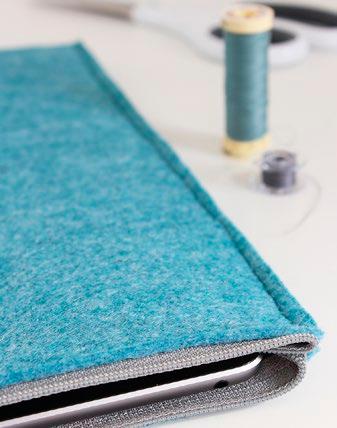
What to do
1 Cut out two felt rectangles, each 3.5cm wider and taller than your device. For example, if it measures 20cm x 25cm, cut your felt pieces to 23.5cm x 28.5cm. To cut the felt, I’d recommend using a steel ruler and rotary cutter, as this will help you get a clean, straight cut. Your cut lines will be visible on the final iPad cover, so don’t rush this step!
2 Line the zip up against the short end of one of the fabric pieces. Use a few bulldog clips to hold it in place.
3 If you have a zipper foot, install it to your sewing machine (if not, you can use a regular foot). Slowly sew the first half of the zip in place. Use a straight stitch in a matching thread to your felt to make it look as neat as possible (this stitching will be visible when you’ve finished).
104 • MAY 2022 CRAFT & DIY

4 Next, repeat the process for the other half of the zip and the other fabric piece. It’s a good idea to clip it in place first, then actually close the zip and check it all lines up well. Adjust it if necessary. When it’s lined up and attached with bulldog clips, sew it in place.
5 Close the zip. Tuck any overhanging ends of the zip into the middle of the case.
6 Finally, use your sewing machine to sew all the way around the three non-zipped edges of the iPad case with a 1cm seam allowance. Try and sew as straight as possible. Don’t forget to secure the start and end of your sewing in place with a few back

stitches, as this needs to be pretty strong to stand up to repeated use.
This project is so easy to customise! If you want to take it to the next level, you could applique a design onto the felt before adding the zip. Or, if you aren’t confident sewing a zip, try adding a strip of velcro or even a button to the top. You could even add a patch pocket to the front for some extra storage. Who said felt is just for kids… n

Mike Aspinall runs one of the UK’s most popular craft blogs, The Crafty Gentleman, where he shares free
DIY tutorials
MAY 2022 • 105
'Tis The Season For Brand New Trends
Bec Oakes talks us through the big trends making a return to runways for summer 2022
With temperatures rising and days becoming longer, summer is almost upon us. And with that comes summer fashion. One of my favourite things to do each season is explore new collections and see how trending items play out beyond the runways. Investing in them, however, is a another story. Buying into every seasonal trend is hardly sustainable. These styles become “unfashionable” mere months after becoming popular and are quickly disposed of in favour

Bec Oakes is a Lancashire-based freelance journalist with particular passions for fashion and culture writing
of the next trending item. So, before making any trend-driven purchase, I consider two key factors and implore anyone wanting to shop responsibly to do the same.
First, consider where you’re buying your clothes from. Explore ethical brands or try shopping secondhand. The 20-year trend cycle, which states that whatever styles are trending now will become trends once again in 20 years or so, caters perfectly to this. Thrift stores, charity shops and online platforms like Vinted are a treasure trove for resurgent trends and are the most sustainable way to buy them.
And, before every purchase you make, consider its long-term place in your wardrobe. This is most easily done if you have a deep understanding of your personal style because once you connect with what
106 • MAY 2022
you truly love, you’re far less likely to buy into pieces that’ll languish in your wardrobe unworn before eventually being disposed of. And by buying into just the trends that truly suit you, you can afford to invest in a few high quality pieces that’ll last longer.
With that said, here’s my guide to spring/summer 2022 and how to shop the trends responsibly…
Spring/summer catwalks were awash with bold colours. Break up neutral outfits with vivid accent pieces or go head-to-toe for maximum impact. There isn’t one colour to define the season—if it’s bright and bold, it’s in. This gives us freedom to pick whichever colours work best for us. For example, Eudon Choi and Saint Laurent’s tangerine tones would wash me out terribly. Versace’s hot pink pieces, however, would be perfect. Sustainable brands offering colourful collections include House of Sunny and Collina Strada. Bold tones not your thing? At the other end of the spectrum is the rise of ultra-luxe wardrobe staples as seen at the likes of The Row, Peter Do and Altuzarra. While this trend is understated, it’s anything but boring, elevating foundational pieces to a whole new level. The great thing about this trend is that these pieces are classic by nature, longevity written into their DNA. They’re worth investing more into as they truly are pieces you’ll rely on for years to come.
Elevated basics can be found at the likes of Theory and Sonia Carrasco.
As always, choosing vintage is the most sustainable option and secondhand stores are the perfect place to find a number of key trends. Shows for spring/summer 2022 have seen the return of outright logomania with bold monograms seen at the likes of Chanel and Tory Burch. Vintage monogram bags have a huge market online and can often be found at really reasonable prices on sites like Vestiaire Collective.
While the movement for big blazers is nothing new, they’re currently peaking in popularity. Sleeves are long, silhouettes are oversized and they’re often worn with nothing underneath— hello Saint Laurent. They’re one of the easiest pieces to source secondhand as all you have to do is head to the menswear department.
And, the 20-year trend cycle has struck again. Circa 2000s styles such as butterfly tops, low-slung jeans and cargo pants were noted at Bluemarine and Chanel among others and can just as easily be found on resell platforms like Depop and Vinted. Just search "Y2K".
The new season trends truly have something for everyone and buying into trends without compromising your personal style has never been easier. So take a considered approach, explore the trends that speak to you and have a stylish yet sustainable summer. n
FASHION & BEAUTY
MAY 2022 • 107
Step Into The Light
Just as regulations requiring face masks are lifted, the beauty world offers up a new kind of face covering. But will LED light therapy really save our skin? Jenessa Williams investigates
What is it?
Initially developed for plant growth experiments by NASA, LED therapy is one of the most-talked about beauty treatments of the last few years, speeding up the process of collagen production for a fresher complexion. Though light therapy can be done in dermatological clinics or using small, pencil-like devices, the trendiest kind are the full robot-style masks, worn for short bursts of time to boost the luminosity of one’s complexion.
What are the supposed benefits?
With no ultraviolet rays or the burn risk that laser and chemical treatments can carry, LED light facials are relatively non-invasive. Different wavelengths enter the skin at different depths, triggering change at a molecular level. Blue light helps to kill bacteria that contributes to acne,

lessening excessive oil production. Green light has been thought to be useful in certain skin cancer and Bowen’s disease treatments, while red light can be used to soothe everything from everyday inflammation and wound healing to psoriasis and hair loss. Treatments often take less than 20 minutes, adjusted for your needs.
Does it actually work?
For those who commit to regular use, the science of LED masks does check out. The novelty design of the mask may also encourage you to take a few moments to yourself while the light does its work, the sort of relaxation that is healing in and of itself.
Nonetheless, clinical reviews are in their early days, and the technology is a significant financial investment for those who are looking to use it at home. If you’re intrigued, you could visit a specialist first. By getting used to the effects before committing to such a bulky product, you can be sure that when you do make your purchase, it's a mask that will last. n
FASHION & BEAUTY 108 • MAY 2022


110
HOME A TASTE OF
Eloise Head Apple Crumble Mug Cake
Apple crumble always reminds me of winter dinners at home with my family. Mum would cook dinner, which was usually something like roast chicken, toad in the hole, or beef stew, and I would help make the apple crumble. I always loved chopping up the apples and eating the apple peel, but my favourite bit was making the crumble topping with my hands! It’s such a comforting dessert. Dad and I always enjoyed it with cold custard. This recipe has all the flavours of the classic, made just for two, with only five ingredients. Perfect if you don’t have a lot of mouths to feed, but still want to enjoy a warming apple crumble at home.
METHOD:
1. Preheat the oven to 180°C (160°C fan)/350°F/ gas mark 4.
2. Mix together the sugar and cinnamon in a small bowl or mug until combined, then add the chopped apple and toss until coated in the mixture.
3. In another small bowl or mug, mix together the flour, sugar and cold butter until combined. I prefer to do this with my fingertips until it becomes crumbly.
4. Scoop the apple mixture into two separate ramekins, then evenly crumble over the topping.
5. Bake for 25 minutes until the tops are golden brown and the apples are soft.
Serving suggestion: Serve your apple crumble warm with cream or ice cream. Yum!
Tip: Add cinnamon and oats to the topping for even more flavour.

INGREDIENTS:
Serves: 2
For the filling
• 5g (1 tbsp) granulated sugar
• ¼ tsp ground cinnamon
• 1 large apple, peeled, cored and cubed
For the topping
• 40g (4 ¾ tbsp) plain (all-purpose) flour
• 40g (3 tbsp) granulated sugar
• 40g (3 tbsp) unsalted butter, cold and cubed

Extracted from Fitwaffle’s
BakingItEasy by Eloise Head (Ebury Press, £20)
MAY 2022 • 111
FOOD
© FAITH MASON


This month, MasterChef winner and Greek food ambassador, Irini Tzortzoglou, presents the indulgent dish hailing from her native Greek island of Crete…
I come from Crete where dairy is of excellent quality due to the large number of wild herbs our sheep and goats feed on. In the west of the island, there is a great recipe that combines leftover cooked lamb, plenty of cheese and very little else so this recipe of mine is based on that, and has also been inspired by
the way that Greeks on some of the islands like to cook lamb, which involves covering boiled goat or lamb with cheese and baking again. I’ve departed from the traditional recipe by using pre-prepared pastry to save time. Any mince you have left over will be delicious over a bowl of pasta.
112 • MAY 2022
WORLD KITCHEN
Crete: Lamb & Cheese Lattice Pie
METHOD:
1. Preheat the oven to 180°C fan assisted.
2. Bring a pan with the olive oil to a medium heat. Add the onion and sweat for 4-5 minutes. Add the garlic and cook for 1 minute longer. Add the butter and increase the heat. Add the mince and cook stirring continuously until brown. Season with sea salt and freshly ground black pepper and the finely chopped rosemary. Lower the heat, cover the pan and cook for 15 minutes stirring occasionally. Leave to cool.
3. Put all the cheese in a bowl and season with some freshly ground pepper.
4. Open up the puff pastry onto a baking tray lined with baking paper or a silicone mat so that you have the short side in front of you. Roughly separate the pastry in three long strips and use two 1cm-long incisions as a guide. The intention is to use the middle section for the filling of the pie and cross the side panels over the filling to cover it. To get the lovely lattice design, make diagonal cuts to the left and right panel of the pastry so that you can criss-cross after you fill the pie.
5. Start by spreading half the cheese onto the middle panel of the pastry, leaving 1cm of clear space top and bottom. Sprinkle with the chopped mint and cinnamon and top with the cooked mince making sure that it has been spread evenly. Cover the mince with the remaining cheese. Roll over the pastry top with the 1cm of clean pastry you left and then start criss-crossing the strips of pastry first from the left and then from the right.
6. When you finish, beat the egg in a bowl and use a brush to apply all over the pie. Sprinkle with the sesame seeds and bake in the oven until golden, approximately 40-45 minutes.
7. Serve with a fresh green side salad and enjoy!
INGREDIENTS:
Cooking time: 2hrs 15mins
Serves: 6-8
• 500g lamb mince
• 1 medium size onion, finely chopped
• 2 cloves of garlic, finely chopped
• 1 tbsp extra virgin olive oil
• 50g butter
• 1 tbsp finely chopped rosemary
• 250g ricotta cheese
• 200g feta cheese, crumbled
• 200g Cretan graviera or other strong hard cheese, grated
• 1 packet of rolled out puff pastry
• 1 small bunch mint, finely chopped
• ½ tsp cinnamon powder
• 1 egg
• 1 tbsp sesame seeds
To discover more of Irini’s Greek recipes, visit irinicooks.com
Explore Irini’s recipe boxes from The Cookaway at thecookaway.com
MAY 2022 • 113
FOOD




114
State Of The Art:
Ilhwa Kim
South Korean visual artist Ilhwa Kim on her practice and inspirations
How would you describe your art?
My work could be regarded as a form of living architecture. Each artwork encapsulates a small, unique world, displaying an ever-shifting surface that inspires our imagination, memories and senses. When observing my work, its surface and the emotions it evokes always change. I like the fluid capacity of any of my pieces to mingle with different types of surroundings as a unique but not disturbing presence.
Why is the tactile element of your work important for you? I sought a medium of work between sculpture and painting and began a transition between these two. From painting, I needed to be able to create compositions where brushstrokes and colour are always present. Sculpture allows my work to exist and interact with its surroundings.
Why did you choose seeds as a medium for your work? All seeds have enormous growth potential. When I first chose paper as my medium, I fell in love with it. I immediately began to assemble and organise the paper seeds—a process like composing a jazz improvisation piece. You do not know
the end of the composition, but you move ever closer by interacting with the building blocks. Looking at each versatile paper shape and imagining its potential, work with my seeds had begun. Thanks to the seeds’ variety in size and shape I’m able to create wall sculptures that dramatically shift and flow—my work has no restrictions. Each piece evokes a part of life and nature—they interact with light and invite the viewer to live closely with them.
Who or what are your main influences? One experience has massively influenced my work: years ago, I had a very curious flight. My plane passed the exact same region in the morning, and again in the evening. The same landscape looked completely different due to light, air, and temperature changes. I wasn’t able to figure out whether the two landscapes were actually the same place or not. This instantly made me imagine what changes happened to any place between morning and evening. This stimulus to calculate or imagine these surprisingly romantic shifts fascinated me.
Tell us briefly about your upcoming solo show at HOFA. My forthcoming show will be a complete immersion of my live architecture. n
As told to Anna Walker. Ilhwa Kim’s solo show at HOFA Gallery takes place September 2022
MAY 2022 • 115
ART

Visionary director Gaspar Noé turns his subversive gaze to a subject that will no doubt surprise his longtime fans. In his new dramaVortex, he gives sex, drugs and violence a rest, and instead ruminates on the fragility of life and the big gaping hole it leaves behind. We follow the day-to-day lives of Lui and Elle—an elderly couple whose existence is disrupted by Elle’s ever-intensifying dementia. This gentle-natured woman keeps forgetting who she is, getting lost on her way to the shops or forgetting to turn the gas off, all while developing sinister paranoia.
Lui, while doing his best to support his wife, is growing increasingly exasperated, especially when she goes as far as throwing out his precious book manuscripts—one of the few remaining things that bring him the slightest sense of normalcy and joy.
As if making sure we’re equally switched on to the realities of these two pained perspectives, Noé makes the film in split screen, with Lui and Elle occupying half each. A perplexing technique for the viewer to begin with, it soon becomes a vital element of the narrative, lending it a documentarylike feel. We’re there with Lui and Elle in real time, noticing the subtlest changes in expression as they grapple with the world around them.
Vortex is not an easy movie. The scenes are long, the dialogue— sparse, and the emotional weight— uncomfortably heavy. The truth is, though, we need more cinema like this; films that are raw and unflinching while dealing with life’s uglier, brutal sides. We all go through unspeakable hardship at some point in our lives, and seeing ourselves and our loved ones represented on screen is what fortifies us to endure these hardships with grace and dignity.
By Eva Mackevic
READERSDIGEST.CO.UK/CULTURE 116 • MAY 2022
H H H H H
VORTEX
Also Out This Month…

THIS MUCH I KNOW TO BE TRUE
Breathtakingly shot, galvanisingly lit and scrupulously performed: there’s no doubt that this new Nick Cave documentary will enthrall every fan. Following the collaborative process between Cave and his long-time friend and fellow Bad Seeds member, Warren Ellis, it’s a humbling, often moving look at the duo bringing to life the songs from their last two studio albums, Ghosteen and Carnage.
The simple process of recording and working their way through the often unfinished songs becomes an almost arthouse-like spectacle. The abandoned warehouse somewhere in Brighton that it was filmed in takes on the role of a majestic temple—the perfect backdrop for Cave’s elegiac, funerary sermons and Ellis’ witchy synthesiser voodoo. The cameras furiously orbiting around them (courtesy of the great Robbie Ryan,
famous for his eclectic work on The Favourite), the electrifying strobe lights and backing singers’ siren-like wails make for soul-stirring viewing, nothing short of a religious reckoning.
Yet it’s the quiet moments in between the recordings—the little snippets of interviews with both Cave and Ellis—that are the heart of the film. The two musicians jest about each other’s vexing work ethic, Cave gives us a presentation of his ceramic figurines (“I’ve followed the government advice and retrained as a ceramicist”) and reads out a few letters from some of his grief-stricken fans desperate for advice; these are the fleeting beats that make this documentary really sing.
You need time and space to absorb this film—it cannot be rushed. Let the words wash over you, the music penetrate your mind and allow yourself to drift off wherever Cave and Ellis take you. It’ll be worth it.
MAY 2022 • 117 FILM
As TV adjusts to a new normal, a game presents itself: spotting the COVID protocols.
Fewer extras would be one; increased exteriors another. The spring’s major drama success, This is Going to Hurt (iPlayer), merited close observation in every respect, unfolding almost entirely inside an NHS hospital where both fixtures and staff are falling into disrepair. Yet it proved the first post-lockdown show to feel as fully realised as the best prelockdown programming, powered by Adam Kay’s writing, Ben Whishaw’s superlative lead performance and incisive direction from Lucy Forbes and Tom Kingsley.

Oldman’s wily turn as a shabby MI5 outcast, and a wryly satirical take on the resurgence of nationalism (the showrunner is Veep writer-producer Will Smith, adapting Mick Herron’s novel). Its final, lengthy preview of Series Two suggests the wheels of production are spinning anew.
The British spy drama Slow Horses (AppleTV+)—a far livelier Tinker Tailor… update than the 2011 film—opens with a spectacular chase around a packed Stansted Airport; you vacillate between gasping and praying everyone’s lateral flows were negative. Plenty to enjoy here, though: a real feel for London after dark, Gary

Which brings us to Zen Motoring (iPlayer), an aptly minimalist endeavour that probably required very little COVID planning—just a camera fixed to the dashboard of a car piloted around North London and beyond. Our driver is Ogmios (writer-star Ivan Battaliero-Owen), a retired battle rapper—part John Shuttleworth, part Eminem—giving the gentlest voice to scenes from his daily commutes. Over six disarming episodes, this semi-improvised, YouTube-originated comedy creates its own cherishably genial world, observing scooter boys and friendly pigeons but, mercifully, no trace of virus.
by Mike McCahill Retro Pick:
AlexeiSayle’sLockdownBikeRides (YouTube)Zen cycling? Comedian Sayle boosted his fanbase mid-lockdown by strapping a camera to his handlebars as he toured half-empty London streets, philosophising as he pedalled.
TELEVISION
118 • MAY 2022
Album Of The Month:
ABitofPrevious
by Belle and Sebastian

The cult Glasgow indie pop band headed by Stuart Murdoch return with their first full-length album in seven years. As the customarily witty title A Bit of Previous suggests, the record takes a stroll down the dusty corridors of the past, passing familiar corners and relishing the sound of the same old creaky floorboards. We’re served a tasting menu of seductive synth pop, folky comfort tunes, and wistful new waveinspired ballads, with each dish boasting Belle and Sebastian’s signature narrative brilliance.
A Bit of Previous is also a nod to reincarnation, which has had a big impact on Murdoch, who states in his liner notes: “There is a firmly held belief in Buddhism that we have been reborn so many times and in so many guises that if we look around us, we are bound to see a person who has been our mother or child in a past life.” It’s a notion he believes would help us drop our prejudices and see the world and other people through a much more empathetic lens.
And that’s what the album is really all about at the end of the day. Here, the Glasgow seven-piece take on ageing with good humour and vitality, offering their music as a firm source of energy and joy, even as the world rips apart around it.
Musically, it’s such an effortlessly hooky and naturally melodic set of ear-pleasing songs, that you won’t even notice when you start humming along; in other words, it’s everything we’ve always loved about Belle and Sebastian.
by Eva Mackevic
WorldRecordStoreDay
Every year since 2007, the world has been officially celebrating the things that make music great: artists, their fans, and independent record stores. This year, the party will take place on April 23, and over 260 independent record shops all across the UK will come together in order to celebrate their unique culture. Special vinyl releases are made exclusively for World Record Store Day and many shops and cities host artist performances and events to mark the occasion. Thousands more shops celebrate the day around the globe in what’s become one of the biggest annual events in the music calendar. To learn more about the event, find a participating shop near you and join the festivities, visit recordstoreday.co.uk
MUSIC 121 MAY 2022 •
May Fiction
A witty dive into the romantic world of a 19th-century aristocrat is this month’s top literary pick
ALady’sGuide toFortune-Hunting
by Sophie Irwin (HarperCollins, £14.99)
If you didn’t know that Sophie Irwin once wrote a dissertation on Georgette Heyer—the queen, and possibly inventor, of Regency Romance novels—then it wouldn’t be hard to guess from A Lady’s Guide to Fortune-Hunting. Here, too, we’re plunged deep into the world of early 19th-century high society, complete with bounders, upper-class twits, fearsome dowagers and ambitious young women on the make.
And when it comes to the last of these groups, they don’t come much more ambitious than Irwin’s heroine Kitty Talbot. But, as the book makes clear, for

James Walton is a book reviewer and broadcaster, and has written and presented 17 series of the BBC Radio 4 literary quiz The Write Stuff

a woman in her situation, the only alternative to ambition is destitution. Aged 20, Kitty is the oldest of five Dorsetshire sisters, whose recently deceased parents have left them with unpayable debts. So unless she can bag herself a rich husband, they face complete financial ruin.
It is, therefore, quite a blow when, on page one, the son of the local squire ends their two-year engagement on the solid grounds that he’s found someone posher. Luckily, Kitty is not a woman to grieve for long over what might have been—and less than ten pages later, she’s on the coach to London.
Before long, she’s wangled her way into a friendship with the aristocratic
BOOKS
120 • MAY 2022
Radcliffe family, whose second son Archie is clearly vulnerable to a spot of minxy manipulation. Unfortunately, his impeccably brooding older brother James (aka Lord Radcliffe) sees through her little schemes and is confident he can see her off. Except that there’s something about how shamelessly she goes about her fortune-hunting that he finds rather beguiling…
As the London balls pile up, we learn a lot about the strange demands of Regency etiquette—including the different gradations of curtesy required for a duke, a marquis or (god forbid) somebody with no title at all. Irwin also deftly juggles several subplots as Kitty’s unstoppable progress continues.
Granted, you probably won’t be too surprised by what happens in the end, but you may well be by how the book gets there. Irwin obviously had a huge amount of fun writing this, her first novel—and it’s difficult to imagine many readers who won’t have just as much fun reading it. n
Name the character
Can you guess the fictional character from these clues (and, of course, the fewer you need the better)?
1. According to Guinness World Records, he’s the most portrayed human literary character in screen history.
2. His first words are: “How are you? You have been in Afghanistan, I perceive.”
3. Those words are addressed to one John Watson.
Answer on p124
Paperbacks
SunshineandLaughter: TheStoryofMorecambeandWise
by Louis Barfe (Apollo, £9.99). Beautifully researched, suitably warm-hearted biography of perhaps the best-loved entertainers of them all.
TheManWhoDiedTwice
by Richard Osman (Penguin, £8.99). All-conquering sequel to Osman’s all-conquering The Thursday Murder Club, with the same blend of laughs, murder mystery and quietly sharp thoughts about growing older.
Barbarossa by Jonathan Dimbleby (Penguin, £9.99). Dimbleby’s account of the 1941 German invasion of Russia is a highly readable, if inevitably shocking reminder of the scale of the campaign— and the horrifying violence involved.
EveryoneIsStillAliveby Cathy Rentzenbrink (Phoenix, £8.99). A novel that captures family life in all its funny, lovely, frustrating and sometimes plain weird glory.
DiddlySquatby Jeremy Clarkson (Michael Joseph, £8.99). Britain’s suddenly most famous farmer on his new life. As funny as you’d imagine— but often surprisingly sweet too.
MAY 2022 • 121
READER’S DIGEST RECOMMENDED READ:
A Novel Idea
John Walsh’s illuminating account of the 1980s British literary scene is this month’s recommended read
In the 1980s, something strange happened to the British literary scene: it became extremely glamorous. Out went the traditional pipe-smoking men of letters, and in came a cool new generation of authors and publishers. Suddenly writers were to be found not only in newspaper books sections, but on the front pages too.
So what brought about this unexpected change? Someone in a good position to know is John Walsh who, as a literary editor, interviewer, critic and—let’s face it—bon viveur, had a ringside seat to the new world of razzamatazz.
In Circus of Dreams, he convincingly argues that there were several factors at work. First, there was the sheer quality of the writers. In 1983, Granta magazine chose its 20 Best Young British Novelists. The list—led off alphabetically by Martin Amis, Pat Barker and Julian Barnes— was full of names still dominant today. Then came the televising of

the Booker Prize, which transformed it into a major media event—and in turn meant that serious literature began to attract serious money. For the first time, too, authors became popular live performers, with the rise of in-store readings and, above all, literary festivals.
But this is by no means just a book of literary history, fascinating though much of that is. Walsh also gives us plenty of terrific stories/gossip from those far-off days when newspaper offices were full of typewriter noise and cigarette smoke, and the choice of lunchtime drinks was definitely not restricted to still or sparkling.
BOOKS
122 • MAY 2022
In this passage, the changes are just getting under way, thanks to the Booker Prize’s wider public appeal— and to another development that seems obvious now, but that certainly didn’t at the time…
‘‘
In the Sunday Times [in 1982] Hunter Davies reported excitedly on a new boom: ‘Two years ago, the average publisher in Britain was a deeply pessimistic figure. His sales were slipping, his costs soaring. The bestseller lists were dominated by a dispiriting combination of royalfamily books, “TV tie-in” books, guidebooks… In the fiction market, pulp carried everything before it.
‘Since then, something strange has happened. Four novels, all winners or finalists in the annual Booker Prize, have sold in such staggering quantities that they have begun to change the whole attitude of British publishers to their trade. The serious novel is back.’ The books in question were Anthony Burgess’s Earthly Powers, William Golding’s Rites of

Passage, Salman Rushdie’s Midnight’s Children and D M Thomas’s The White Hotel. ‘None is an easy read,’ Davies warned his readers, ‘But they have sold and sold.’ This was a startling development. Not only was the serious British novel having a rebirth; it was, amazingly, a commercial success.
Luckily for British readers, another development now made it possible to access new books in numbers unheard of in the days of WH Smith and John Menzies. The new phenomenon was called Tim Waterstone. In his student years, Waterstone spent hours browsing in Heffers, the ‘anchor bookseller’ of Cambridge. One term-time afternoon, he experienced ‘a stunning moment of sudden, unexpected, joyful clarity’. As a friend walked past, ‘I told him that, one day, I was going to do this, like Heffers but better than Heffers, the best in the land, and all over the land.’ Waterstone had identified a niche in the bookselling market. He had noted how WH Smith, despite its 35 per cent market share, were keener on flogging bestsellers than literary fiction and were pulling back from selling books in general, turning to videos, music, toys, cards and stationery instead.
Waterstone recalls in his memoirs that ‘we all found it inexplicable that a city as great and culturally diverse as London had… no stockholding literary bookshops at all, and certainly not one that was open at the weekend
MAY 2022 • 123
READER’S DIGEST Circusof Dreams: Adventuresin the1980s LiteraryWorld by John Walsh is published by Constable at £25
BOOKS
after lunchtime on Saturdays, let alone on weekday evenings.’ He wanted to produce a chain that sold only real books—and to fill the shops, floor to ceiling, with titles that people longed to buy; he wanted to cram the shelves with vast amounts of stock, and to staff the shops with people who knew their subject and could enthuse with the punters about what was on the shelves. And he wanted to have his shops stay open until 10pm, every day and at weekends.
The first bookshop bearing the chairman’s name and the company’s W logo opened its doors at 9am on 30 September 1982. The seven staff, including Tim, watched with interest as the first customer walked in, headed for the Reference section, bought a copy of the Koran and took it to the till to pay. Waterstone’s was in business. In the next ten years, it would revolutionise British bookselling.
’’
John Walsh’s Top Five 1980s Novels
Restorationby Rose Tremain. Headstrong, ambitious and lustful, medical student Robert Merivel finds himself in Charles II’s court, as Tremain reinvents the historical novel with flamboyant wit and vivid energy.
Midnight’sChildrenby Salman
Rushdie. A head-spinning tale connecting one man’s life to the story of post-Independence India. Rushdie’s masterpiece virtually invented a new language for Anglo-Indian literature.
Waterland by Graham Swift. A Norfolk teacher facing the sack regales his class with 300 years of scandalous family history. Swift combines Dickensian storytelling with subtle psychology.
Answer to Name the Character:
Sherlock Holmes. The word “human” in Clue 1 is because Dracula has been portrayed more often—but isn’t considered human by Guinness World Records (Holmes is, of course, right about Afghanistan).

Money by Martin Amis. John Self, media tart and avid consumer of junk culture, visits New York to direct a film with some Hollywood grotesques. Amis’s gleeful chronicling of modern squalor was never funnier.
OrangesAreNottheOnlyFruit by Jeanette Winterson. Winterson’s assured debut concerns a young girl, adopted by Pentecostalists, struggling with her beliefs and the onset of lesbian attraction.
124 • MAY 2022
Books
THAT CHANGED MY LIFE
Author and illustrator Liz Pichon is best known for her Tom Gates series for children, which has sold more than 11 million copies worldwide. Her new book, You Can Draw Tom Gates is out now, published by Scholastic

The Bad Speller by William Steig
Reading this as a child was a life-changing moment. Although I loved reading, I found it quite difficult, not realising then that I was dyslexic. My mum had an American friend who bought me this book because she knew how much I struggled with spelling, and she thought it would make me laugh. It really did. And it stuck in my memory a lot. Even now, it’s one of those books that never seems to age. I love the drawings—they planted a seed in my head somewhere that pictures and words go together and can be really funny, and that you don’t have to do things in the kind of “normal” way.

Silly Verse For Kids
by Spike Milligan
This book is so tiny and thin, but I loved that it had all these silly poems inside—and it made me want to write rhymes, and to have a go at drawing. It’s just completely bonkers—which obviously Spike Milligan was himself, in a good way. After reading this, I started writing my own poetry. I’m always including silly poems and lyrics in my books and I think that’s definitely down to the influence of this book. The illustrations in it didn’t feel unobtainable either—you could copy them yourself. It was just one of those books that you would read as a kid and it would really spark your imagination, and I think if you read the poems in this book to children now, they’d still find as much pleasure in them.
Jaws
by Peter Benchley


This book has a particular meaning for me. In school, I had a teacher who knew absolutely nothing about popular culture so when I had to come up with a story for my homework, I based it on the plot of Jaws (which I had loved). When he read my story, he thought it was amazing—but he wanted to share it with the deputy heads, and I had to do everything possible to try to sway him! I tell that story to children now, because I think it’s great to learn from other people’s work, but don’t pretend it’s yours— especially to a teacher!
MAY 2022 • 125
FOR MORE, GO TO READERSDIGEST.CO.UK/CULTURE
Why Is Everyone Talking About NFTs?
James O’Malley breaks down the hot topic of non-fungible tokens
When I was at school, every few years there was a new collectable trend that was the talk of the playground. Whether it was Pogs, Beanie Babies or Pokémon cards, the outcome was always the same: after a flurry of interest, and prices going crazy, they ended up stuffed into the back of the cupboard.
So it’s fascinating to see the same thing happening today—online—as the world is going crazy for NFTs.
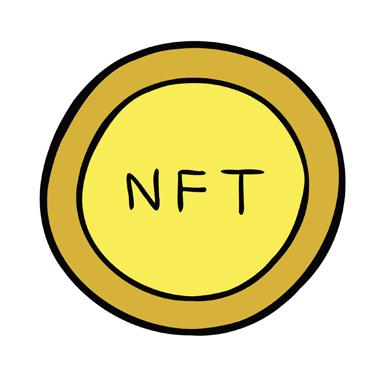
song or a photograph. You could even turn an Excel spreadsheet into an NFT if you wanted to. But it’s in digital art where the idea has really taken off, as the internet has been swamped with thousands of NFT works, including the ubiquitous cartoon “Bored Ape” images that people are trading like rare Pokémon cards.
NFTs are “non-fungible tokens”, and are designed to make collectables work on the internet. Built on top of the same technology that makes cryptocurrencies like Bitcoin work, if you own an NFT, it’s possible to use complex maths to prove that it belongs to you, and only to you. This means that even if files can be copied or shared, ultimately there is proof of who it really belongs to.
NFTs can, in theory, be created from any sort of a digital file, such as a
What’s striking is just how quickly NFTs have taken off after being promoted by celebrities ranging from Paris Hilton to William Shatner, and the money involved is eye-watering. Last year, an artist known as “Beeple” auctioned an NFT of one of his works for $69m through auction house Christies. Buying and selling NFTs, it appears, like trading real art, can make you rich.
However, this is only one side of the story. Before you go out and start investing, be warned: many people think that NFTs are, like many other get-rich-quick schemes, a scam.
126 • MAY 2022
TECHNOLOGY
Though NFTs are new, there are already many examples of unscrupulous sellers seemingly inflating prices artificially, before selling for high profit to an outsider for a sum that doesn’t reflect the token’s true value.
And there are examples of NFT investors being “rugged”, where the seller promises that funds raised during an NFT sale will be used to, for example, create a video game— only for the seller to then pull out the proverbial rug from under the buyers, and run away with the money.
There is also the cryptoequivalent of credit card fraud, where unsuspecting victims have been persuaded to hand over the keys to their virtual wallets, and have had them emptied, their digital tokens stolen. This perhaps highlights the major risk factor with NFTs: they are completely unregulated and exist outside of government control. So if someone steals your valuable tokens, there’s no bank you can appeal to or any legal process to get your stuff back.
Even without the scams, there is still good reason to be sceptical about NFTs. For example, though the point of an NFT is to enable you to claim exclusive ownership of digital goods, it may turn out that… you don’t really actually own anything. If the sceptics are right, owning an NFT is less like owning a Da Vinci or a Vermeer, and more like buying Mayfair and Park
Lane in Monopoly, and then using the game cards to claim you own the real streets.
This is because of two reasons: firstly, there’s the fact that many NFTs don’t actually contain the digital file that you’re said to own. Instead, the NFT will just have a link to an image or video file somewhere else on the internet, which means that if the server holding that song or pictures is taken offline, all you really own is a meaningless string of letters.
And secondly, the concept of “ownership” is surprisingly hard to define. Though the exact legal terms may vary when you buy a token, for the most part owning an NFT doesn’t grant you any legal rights: if you own an NFT of a painting, you don’t necessarily have the rights to print it, hang it in a gallery, or license reproductions. And if you own an NFT of a song, you have no rights to play it on the radio or collect royalty fees when it is played in public.
So there are good reasons to be sceptical of the NFT hype. Though I’m not qualified to give you financial advice, I can tell you that I will not be buying NFTs for myself, at least until the technology has matured. I think if you want to support a favourite artist who is flogging them, it could be worth it as a well meaning gesture. But as an investment tool? Save your money and avoid the risk of having an attic full of virtual Beanie Babies that nobody wants to buy. n
127
MAY 2022 •
SYMBOL SUMS
Can you work out these number sums using three of these four symbols?
You Couldn’t Make It Up
Win £30 for your true, funny stories!
Go to readersdigest.co.uk/contact-us or facebook.com/readersdigestuk
Our six-year-old son told my wife and I that his grandma had warned him not to go near the river because the big cherry would get him.
Confused, we rang his grandma only to find out that she actually said, “Be careful not to fall into the river as the current will take you away.”
THE FIRST CORRECT ANSWER WE PICK WINS £50!*
Email excerpts@readersdigest.co.uk
ANSWER TO APRIL'S PRIZE QUESTION
SANDWICH BRAIN
CLED HERBERT, via email
My neighbour Erik is with EE and had to ring the company as he had no signal and no internet. After they explained to him that there was a mast trouble, Erik wasn't satisfied and said, "I want to speak to the boss, Kevin Bacon." I laughed so much I choked on my tea!
JANE WHITAKER, Kent
I sometimes ask Siri questions on my iPhone. She comes up with some strange answers. I asked her recently if she had a boyfriend. Her reply was, "Why? So we can get ice cream together, and listen to music and
128 • MAY 2022
FUN & GAMES
PESARO,
AND THE £50 GOES TO… LUCY
Middlesex £50 PRIZE QUESTION
−
+
÷ × 26 25 2 7 = 7
travel across galaxies, only to have it end in slammed doors, heartbreak and loneliness. Sure, where do I sign up?”.
ROB AITCHISON, Merseyside
My daughter, a teacher, was asking her reception class all about their grandparents. When she came to one child, she asked if her grandmother lived nearby. The child replied, "No, she lives at the airport". Puzzled, my daughter questioned her about this.
The child replied, "We just go and pick her up from the airport when we want her to visit us."
PAULA MADDOCKS, Hertfordshire
My Aunt Sally was a big fan of Gracie Fields and my uncle had chosen to have her namesake song “Sally” played at the end of her funeral in the local crematorium. We had given the staff a CD to play but unfortunately they didn't select the right track so as the curtains closed around Aunt Sally's coffin, the quiet sadness was broken by howls of laughter as Gracie sang "Wish me luck as you wave me goodbye, cheerio, here I go on my way"!
Aunt Sally would have loved it!
RACHEL HOWLETT, Bedfordshire
My mother, born in 1910, was a woman of her time. As was the custom of the day in the valleys of Wales, the dead were wrapped in winding sheets, prior to burial.

My mother had kept, unused, two large Irish linen bedsheets, one of her wedding presents, to be used as shrouds for my father and herself.
Imagine my new husband’s shock on arrival for a first visit to my old home, when he was greeted with, "So lovely to have you to stay; I’ve put the death sheets on the bed for you.”
I had to explain what an honour this was as we lay, giggling, between them that night.
HELEN HILLS, Pembrokeshire
Beware of using a bank note to mark your place in a book, especially if you plan to pass it onto a friend when you've read it. Be especially aware if the subject of said book is taking care of your money. I thought my friend was never going to stop laughing when she returned it to me.
MAGGIE COBBETT, North Yorkshire
MAY 2022 • 129
cartoon by Guto Dias
"HAPPY CINCO DE MAYO!"
TRIVIA
By Samantha Rideout
1. Which country removed Queen Elizabeth II as its head of state in 2021?
2. The vampire film Nosferatu (1922) prompted a copyright-infringement lawsuit from the estate of which writer?
3. What crustacean can you try as an ice-cream flavour in Bar Harbor, Maine?
4. Worldwide, what country was the toptrending news-related search on Google last year?
5. Decades before Taylor Swift crossed over to pop, what other country singer recorded the hits “Crazy” and “I Fall to Pieces”?
6. The Cyrillic alphabet was added to euro banknotes after which country joined the EU in 2007?
8. Which Canadian holds the record for the most goals scored in international football?
9. What is the top-selling video game of all time, with more than 238 million sold?
10. Nearly every country in the world has ratified the UN’s Convention on the Rights of the Child. Which one has not?
11. The majority of gallstones are made up mostly of what substance?

7. Do sea sponges have organs?
12. Where is the world’s tallest waterfall?
13. The U.K. Prime Minister’s residence, 10 Downing Street, originally had yellow bricks. What led to the now-iconic black paint?
15. Roughly what percentage of leopards and jaguars have black fur?
14. What breed of dog gained fame as Obama-family pets?
14. The Portuguese water dog. 15. Ten or 11 percent, at most.
7. No, but they are nevertheless considered animals. 8. Christine Sinclair. 9. Minecraft. 10. The United States. 11. Cholesterol. 12. Venezuela (Angel Falls). 13. Air pollution originally turned them black. They’re now painted black to maintain the appearance.
Answers: 1. Barbados. 2. Bram Stoker. 3. Lobster. 4. Afghanistan. 5. Patsy Cline. 6. Bulgaria.
Photo: ©getty images
130 • MAY 2022

It’s never been easier to enjoy the world’s favourite magazine!











YES I want to subscribe to Reader’s Digest Magazine for just £3 for 3 issues (a saving of £8.37 on the shop price of £11.37 based on the cover price of £3.79 per issue). I understand that if I do not wish to continue receiving Reader’s Digest after my first 3 issues I can simply cancel my subscription by contacting customer services. If I do want to continue to subscribe after my first 3 issues I need do nothing and my subscription will automatically be renewed at the low rate of £7.50 for every 3 issues until I decide otherwise.



Please complete direct debit mandate below Name of Bank ...................................................................... Account Holder Branch: / / Account No Instructions to your bank or Building Society: Pay Reader’s Digest Direct Debits from the account detailed on this instruction subject to the safeguards assured by the Direct Debit Guarantee. I understand that this instruction may remain with Reader’s Digest and if so will be passed electronically to my Bank or Building Society. Signature ..................................................................... Date .............................................................................. INSTRUCTIONS TO YOUR BANK OR BUILDING SOCIETY TO PAY BY DIRECT DEBIT. Originators reference: 400162
Address: Postcode: Telephone: Email:
films,
alongside
profiles.
Name:
Each must-read monthly issue covers life, culture, health, books,
food, humour and travel
in-depth news features, memoirs and celebrity
Sort Code Data Protection: From time to time Reader’s Digest may contact you with details of its products and services. Please tick here if you object to receiving such information Return your completed form to: Reader’s Digest, The Maltings, West Street, Bourne PE10 9PH Or call us today on 0330 333 2220 Quoting code RDN098 3
JUST £3!
ISSUES FOR
IT PAYS TO INCREASE YOUR
Word Power
You know what they say about all work and no play. Take a break and see if you know these terms of employment.
BY GEORGE MURRAY
1. turkey trot—A: office-party dancing. B: transfer of an underperforming employee. C: team-building exercise.
2. benchmarks—A: notes left on desks. B: computer errors. C: standards for measurement.
3. flexitime—A: flexible work hours. B: stretch break during a meeting. C: abuse of power.
4. matrix—A: multi-manager structure. B: office printer. C: graph paper.
5. delegating—A: deleting sensitive content. B: hiring. C: assigning tasks to others.
6. ergonomics—A: lunch break aerobics. B: workplace design for health and safety. C: accounting structure.
7. moonlighting—A: defrauding the company. B: working a second job. C: gathering production materials.
8. turnover—A: rate of staff changes. B: unaddressed problem. C: business lost to competitors.
9. garnishment—A: catering
budget. B: court-ordered seizure of pay. C: net earnings.
10. hotelling—A: providing temporary office space to telecommuters. B: meeting in upscale venues. C: staying overnight at work.
11. inpatriate—A: loyal employee. B: insufferable colleague. C: foreign employee working at headquarters.
12. downshifting—A: passing the blame. B: taking a less demanding job for lifestyle reasons. C: economic slowdown.
13. remediation—A: correction of a deficiency. B: repetitive presentation. C: holiday time.
14. nepotism—A: tax evasion. B: stress-related breakdown. C: favouritism shown to relatives.
15. perquisite—A: job requiring pleasant demeanour. B: special employment benefit. C: final paycheque.
MAY 2022 • 133
AND GAMES
FUN
Answers
1. turkey trot—[B] transfer of an underperforming employee. Leo was reassigned to Savi’s department, his third turkey trot this year.
2. benchmarks—[C] standards for measurement. Margot outlined the quarter’s ambitious benchmarks.
3. flexitime—[A] flexible work hours. Hamid came in an hour early as part of his flexitime plan for picking up the kids from school.
4. matrix—[A] multi-manager structure. Li needed a flow chart to understand her reporting matrix.
5. delegating—[C] assigning tasks to others. Genevieve’s overflowing desk revealed she wasn’t delegating enough work.
6. ergonomics—[B] workplace design for health and safety. The consultant adjusted Joan’s chair, saying her back problems were a result of poor ergonomics.
7. moonlighting—[B] working a second job. Milos’s colleagues were tickled to learn he was moonlighting as an opera singer.
8. turnover—[A] rate of staff changes. Employees were offered a better benefits package in an effort to reduce turnover.
9. garnishment—[B] court-ordered seizure of pay. The deductions on
John’s pay stub included union dues and child-support garnishment.
10. hotelling—[A] providing temporary office space to telecommuters. Lazlo’s old cubicle was used for hotelling off-site workers.
11. inpatriate—[C] foreign employee working at headquarters. The American engineering team boasts several inpatriates with degrees from the Indian Institutes of Technology.
12. downshifting—[B] taking a less demanding job for lifestyle reasons. With a third child on the way, Sarom downshifted to a position that would allow for more time at home.
13. remediation—[A] correction of a deficiency. Felicia excelled at programming but needed remediation on her admin skills.
14. nepotism—[C] favouritism shown to relatives. The appointment of the CEO’s inexperienced daughter to head of sales smacks of nepotism.
15. perquisite—[B] special employment benefit. Andrea noted her new job’s perquisites, which included gym membership and a company vehicle.
VOCABULARY RATINGS
7–10: fair
11–12: good
13–15: excellent
WORD POWER
134 • MAY 2022
Share your life story with the people who matter most...
Your family
PRESERVE YOUR PRECIOUS MEMORIES
Your life is something to be proud of. Share your memories, your legacy and your life with your loved ones in a beautiful book that captures your voice and preserves your family history forever.
Now is the time to write your life story, a chance to re-live your experiences and share your treasured memories with your family. LifeBook is here to help you create a precious memoir of your life, capturing your history, your unique adventures,

Includes 1 hour of audio highlights and 10 copies to share with your family
your thoughtful learnings, your life lessons and your values in a beautiful handcrafted book that you will be proud to have written. Leave a priceless record and legacy, preserved forever for your family.

And find out how easy it is to get started... Call 0808 278 8477 today or visit www.lifebookuk.com
Reserve your place NOW
The gift of a lifetime
Remember and be remembered
Ships
How to play:
Determine the position of the ten ships listed. A square with wavy lines indicates water and will not contain a ship. The numbers indicate how many squares in that row or column contain parts of ships. No two ships touch each other, not even diagonally.
Star Search
How to play:
Find the stars that are hidden in some of the blank squares. The numbered squares indicate how many stars are hidden in squares adjacent to it (including diagonally).
1 2 3 1 2 5 0 1 4 2 2 2 3 1 5 1 1 1 2 1
2 1 1 4 2 3 2 2 1 1 4 1 ExamplE: ExamplE: 3 2 2 2 1 136 • MAY 2022 FUN & GAMES
3 2 1 4 4 0 3 1 2
BRAIN TEASERS
How to play:
Insert the numbers 1 to 6 just once in each a) row, b) column, c) bold outlined area and d) white or grey rectangle.
The bold outlined areas are no longer 2x3!
www.sixysudoku.com for
and a free app puzzles © pzzl.com
Visit
books
ExamplE: sixy2205_01 Type: [ 1] 2 1 1 5 5 4 3 3 6 3 3 4 6 6 1 5 2 6 5 2 3 4 1 1 4 4 3 1 6 2 5 5 5 5 6 6 4 2 1 3 1 2 3 3 5 6 4 sixy2205_02 Type: [ 1] 4 4 3 6 2 5 1 2 1 5 5 3 6 4 6 5 1 4 3 2 2 3 3 4 2 6 1 5 5 5 2 3 1 4 6 6 1 1 6 4 4 5 2 3 sixy2205_04 Type: [ 1] 2 2 6 5 3 4 1 1 3 4 1 2 5 6 1 5 5 4 6 2 3 6 3 3 2 5 1 4 4 4 2 6 1 3 5 5 5 1 3 4 6 6 2 sixy2205_06 Type: [ 2] 6 1 4 4 3 5 5 2 2 4 3 3 5 6 1 4 3 5 6 1 1 2 6 3 sixy2205_03 Type: [ 1] 4 3 3 2 2 5 1 6 5 6 1 3 4 4 2 1 2 2 4 6 3 5 5 3 5 6 6 1 2 4 2 1 5 4 6 3 6 4 3 2 5 1 1 sixy2205_05 Type: [ 8] 4 5 1 1 2 2 5 3 6 6 3 2 5 5 1 4 3 4 6 1 2 6 3 MAY 2022 • 137
1 3 5 2 4 6
BEwarE!
SIXY SUDOKU
CROSSWISE Test your general knowledge. Answers on p142
9 Highland (7) 10 Burst violently (7) 11 Tennis tie (5) 12 Clogged (9) 13 Keeps (7) 16 Welsh castle, fortress and stately home (5) 17 Butt (4) 18 City in NW France (4) 19 Fortune (4) 21 Purchases (4) 23 Follows orders (5) 25 Republic containing the northernmost point in Africa (7) 26 Discouragement (9) 28 Intended (5) 30 Cap attachment (7) 31 Thrash (7)
1 Long and thin (7) 2 Hawaiian island (4) 3 Excision (8) 4 Prosperous (10) 5 Skinny (4) 6 Maintenance (6) 7 Short nap (5,5) 8 Rosy (7) 14 Path of a projectile (10) 15 Replace (10) 19 Monasticism (8) 20 Pongo (7) 22 Tack maker (7) 24 Move up or down through computer text (6) 27 Spot (4) 29 Flat-bottomed river boat (4)
ACROSS
DOWN
MAY 2022 • 139 READER’S DIGEST
TEASERS ANSWERS 3 6 1 4 2 5 sixy2205_06 Type: [ 2] 6 1 4 4 5 2 3 3 5 5 2 6 1 4 2 4 3 3 1 5 6 5 6 1 3 4 2 4 3 5 2 6 6 1 1 1 2 6 4 3 3 5 sixy2205_03 Type: [ 1] 4 3 3 2 2 5 1 6 5 6 1 3 4 4 2 1 2 2 4 6 3 5 5 3 5 6 6 1 2 4 2 1 5 4 6 3 6 4 3 2 5 1 1 sixy2205_05 Type: [ 8] 4 5 1 6 3 2 1 2 2 5 3 3 4 6 6 6 3 2 4 1 5 5 5 1 4 2 6 3 3 4 6 5 2 1 1 2 6 3 1 5 4 sixy2205_02 Type: [ 1] 4 4 3 6 2 5 1 2 1 5 5 3 6 4 6 5 1 4 3 2 2 3 3 4 2 6 1 5 5 5 2 3 1 4 6 6 1 1 6 4 4 5 2 3 sixy2205_04 Type: [ 1] 2 2 6 5 3 4 1 1 3 4 1 2 5 6 1 5 5 4 6 2 3 6 3 3 2 5 1 4 4 4 2 6 1 3 5 5 5 1 3 4 6 6 2 sixy2205_01 Type: [ 1] 2 1 1 5 5 4 3 3 6 3 3 4 6 6 1 5 2 6 5 2 3 4 1 1 4 4 3 1 6 2 5 5 5 5 6 6 4 2 1 3 1 2 3 3 5 6 4 2 1 1 4 2 3 2 2 1 1 4 1 1 2 3 1 2 5 0 1 4 2 2 2 3 1 5 1 1 1 2 1 Ships Star Search SIXY SUDOKU SOLUTIONS
BRAIN
Laugh!
WIN £30 for every reader’s joke we publish!
Go to readersdigest.co.uk/contact-us or facebook.com/readersdigestuk
Somebody stole half of my camel costume, so now I’ve got the right hump.
Comedian GARY DELANEY
The spelling of Irish names is my pet piamh. @LITTLELOSTLAD, via Twitter
I was at the airport when I saw a guy fall unconscious on the baggage carousel. He came around slowly.
Seen on Reddit
Where is Ireland? One sea away from Iceland. @BAZZACC, via Twitter
I wonder what Jeff Bezos does before he goes to bed. Probably puts his pyjamazon. Seen on Reddit
My son was sent home from World Book Day because he had his appendix removed.
@GOVINDAJEGGY, via Twitter
Not surprised to learn that I’ve lost my job at the graffiti removal company. The writing’s been on the wall for a while now.
Comedian GLENNY RODGE
I came home really drunk last night and my wife wasn’t happy at all. “How much have you had to drink?” she asked sternly, staring at me.
“Nothing,” I slurred.
“Look at me,” she shouted. “It’s either me or the pub, which one is it?”
140 • MAY 2022
FUN & GAMES
I quit my job at Starbucks because of all the NAME
CALLING!
@DAVEASTATED, via Twitter

I paused for a second while I thought and mumbled, “It’s you. I can tell by the voice.”
Seen on Reddit
A man went to his lawyer and told him, “My neighbour owes me £500 and he won’t pay up. What should I do?”
“Do you have any proof that he owes you the money?” asked the lawyer.
“Nope,” replied the man.
“OK, then write him a letter asking him for the £5,000 he owed you,” said the lawyer.
“But it’s only £500,” replied the man.
“Precisely. That’s what he will reply and then you’ll have your proof!”
Seen on Reddit
That’s right, I’m the person who introduced you to delayed gratification. Thank me later.
Comedian MOOSE ALLAIN
Why didn’t 4 ask 5 out on a date?
Because he was 22.
Seen on Reddit



MAY 2022 • 141
SOME CREATIVE WAYS TO “FIX” DAMAGE TO THEIR VEHICLES via boredpanda.com
THESE CAR OWNERS HAD
Four Wheel Fails
Jokes about white sugar are pretty rare. But jokes about brown sugar? Demerara.
MILLER H CALDWELL, Dumfries
Adam and Eve were the first people not to understand the Apple terms and conditions.
Seen on Reddit
I met a magical Genie who gave me one wish. I said, “I wish I could be you.”
The Genue said, “Weurd wush but U wull grant ut.”
Seen on Twitter
A man was idling in the street, bored, when he saw a man selling apples. He approached and asked, “How much do these apples cost?”
The vendor replied, “An apple costs £1 and an apple seed costs £2.”
Confused, the man asked, “Why are you selling the seeds for more?”
The vendor said, “Apple seeds are known to make you smarter. Why don’t you try them?”
Sceptical, the man handed over £4 and purchased two seeds. As he walked and started chewing, he realised that he could have just bought an apple and eaten those seeds. Hurrying back to the vendor, he asked, “Don’t you realise people could just buy an apple and eat those seeds instead of buying them separately?”
The vendor smiled, and said, “See? I told you you’d become smarter!”
Seen on Reddit
CROSSWORD ANSWERS
Not-SoSuper Powers

Twitter users share their underwhelming superpower
@elise_millsssss: I can only think of really good comebacks two weeks after an argument
@Brian_Cronin: I can always tell if I’m listening to the opening bass line of “Ice Ice Baby” or “Under Pressure”
@SomethingPork: The ability to see the numbers on a house or building without turning the volume down in my car
@GreenCard74: I will always find the slowest checkout line in any store anywhere. If you see me in line, pick a different lane
@KansasBradbury: I have the ability to realise when I’ve overstayed my welcome. I don’t leave, but I sometimes think about it
Across: 9 Plateau, 10 Explode, 11 Deuce, 12 Congested, 13 Retains, 16 Powis, 17 Stub, 18 Caen, 19 Mint, 21 Buys, 23 Obeys, 25 Tunisia, 26 Deterrent, 28 Hoped, 30 Earflap, 31 Trounce
Down: 1 Spidery, 2 Oahu, 3 Deletion, 4 Successful, 5 Lean, 6 Upkeep, 7 Forty winks, 8 Reddish, 14 Trajectory, 15 Substitute, 19 Monkhood, 20 Soldier, 22 Saddler, 24 Scroll, 27 Espy, 29 Punt
LAUGH
142 • MAY 2022
Beat the Cartoonist!

Think of a witty caption for this cartoon—the three best suggestions, along with the cartoonist’s original, will be posted on our website in mid-May.
If your entry gets the most votes, you’ll win £50.
Submit to captions@readersdigest.co.uk by May 7. We’ll announce the winner in our July issue.
MARCH WINNER

Our cartoonist’s caption, “Happy Mother’s Day...please note: normality will resume tomorrow” successfully tickled our audience’s pickle this month as he won the popular vote by a landslide! Want to steal his crown? Enter the competition above and next month it could be yours...
cartoons by Royston Robertson
IN THE JUNE ISSUE

Juliette Binoche
The French cinema icon on surviving the pandemic and working with Morgan Freeman

Discovering Sri Lanka via the famous colonialera railway line HILL COUNTRY LINE

TEAM BRIT
Meet the all-disabled racing team that aims to make history by taking part in the 24 Hours of Le Mans
READER’S DIGEST MAY 2022 • 143
A Century Of Change
As we continue our centenary celebrations, we look at how attitudes to smoking have changed in the last 100 years…
Picture this: you’re flicking channels and you come across an advertisement for a popular cigarette brand with doctors extolling its health benefits. Unbelievable? Think again. A century ago, attitudes around smoking were strikingly different, and, shocking though it may now be, it was de rigueur to see health professionals give their approval to cigarette makers.
In a jaw-dropping state of affairs, doctors weren’t the only ones to promote smoking—in fact, during the first run of the cartoon show The Flintstones in 1960, its official sponsor was Winston cigarettes, and in one advertising segment, the characters Fred Flintstone and Barney Rubble are seen smoking a pack together, with the latter remarking after a puff: “It tastes good, like a cigarette should.”

focused on a groundbreaking study that concluded smoking was “one of the very significant reasons fewer men than women attain old age.”
Another story published in 1952 called “Cancer by the Carton” was credited with contributing to the largest drop in cigarette smoking since the Great Depression.

Smoking has lost its coolfactor in recent decades, and the number of smokers across the country continues to steadily decline. In 1922 over 65,000 tons of tobacco were sold in the UK, reaching a peak of 125,960 tons sold in 1961. Due to growing public awareness of smoking’s detrimental health effects, by 2014 that figure had dropped to 43,793 tons.
There was pushback in the media against the fabrications of wealthy tobacco giants however, and it was the American issue of Reader’s Digest which regularly sounded the (smoke) alarm. The first story on the topic was published in its pages in 1924. “Does Tobacco Injure the Human Body?”,
In the past decade, the rate of smokers has dropped considerably. And it’s young people in particular who are turning away from the fumes: 25.7 per cent of 18-24 year olds smoked regularly in 2011 while in 2018 16.8 per cent did. Hear that? It’s the collective sound of lungs breathing again. n
by Marco Marcelline
144 • MAY 2022
100 YEARS
rest . recover . rise .

At fourfive, our mission is simple; we want to help people lead healthier, happier lives through the power of premium supplements. That’s why we only use the highest quality ingredients in forms that your body can put straight to work.
Founded by professional rugby players George Kruis and Dom Day, fourfive set out to provide professional standard nutrition to any body looking to stay active for longer.
Our premium range is designed by industry leading experts to fit seamlessly into your daily routine and provides the optimum levels of nutrition that your body needs.
@fourfiveuk fourfive.com



SAVE 10% ON YOUR FIRST ORDER
Visit fourfive.com and use code READERS at checkout to redeem. Terms and Conditions apply. For more information visit fourfive.com.
Immunace® was developed over 20 years ago by Vitabiotics’ experts. It was one of the first immune health supplements to pioneer the inclusion of vitamin D for the immune system.


Immunace® Original includes 24 vitamins and nutrients. †With vitamins D, C, zinc and selenium which contribute to the normal function of your immune system.
Immunace® Extra Protection is our advanced formula with the benefits of Immunace® Original, extra vitamin D and more.















with 10mcg vitamin D
Britain’s No.1 Vitamin Company* ORIGINAL EXTRA PROTECTION SUPPORT YOUR IMMUNE SYSTEM† The UK Department of Health recommends that all adults should consider taking a daily supplement containing 10mcg of vitamin D, particularly in Autumn and Winter, as found in Immunace Original. 2022-03-31_ADIMMCONP_E From , Superdrug, Holland & Barrett, supermarkets, chemists, health stores www.immunace.com * Nielsen GB ScanTrack UK Total Coverage Value & Unit Retail Sales 52 w/e 29/01/22. To verify contact Vitabiotics Ltd, 1 Apsley Way, London, NW2 7HF.








































































































































































 Mrs Verrell East Sussex
Mrs Verrell East Sussex
















































































































































































